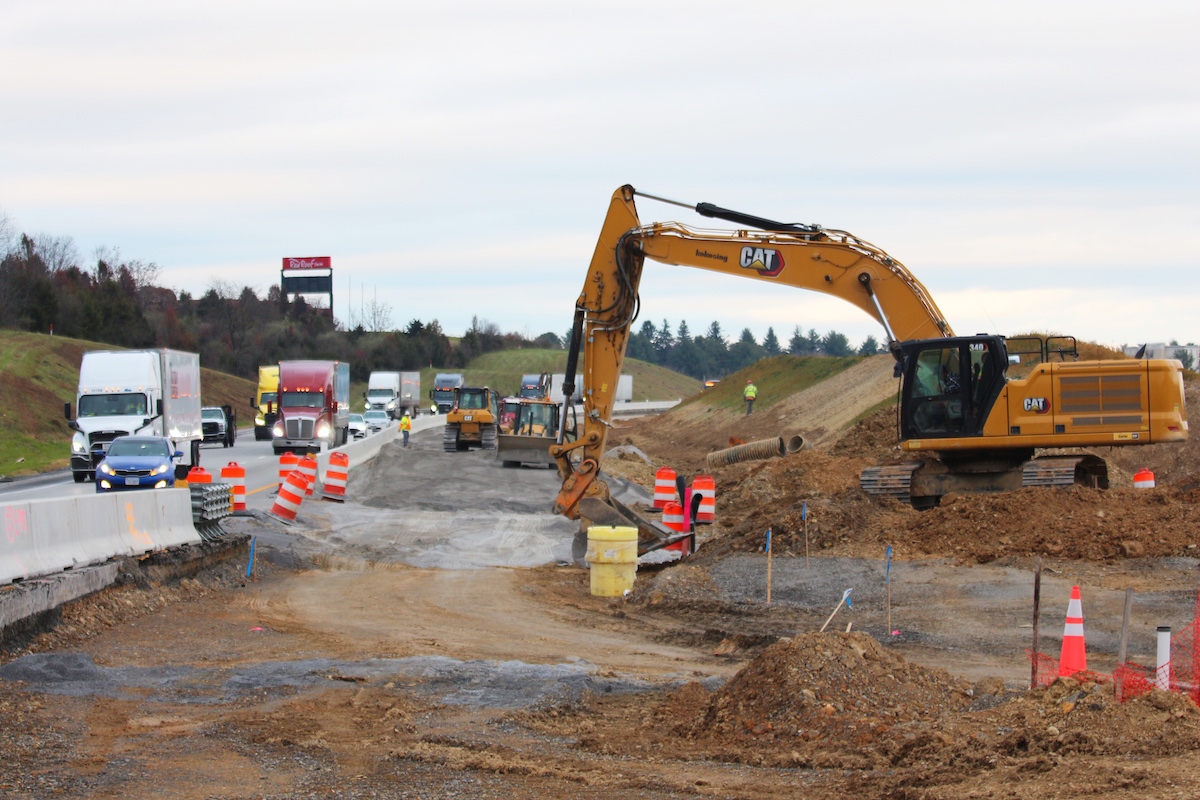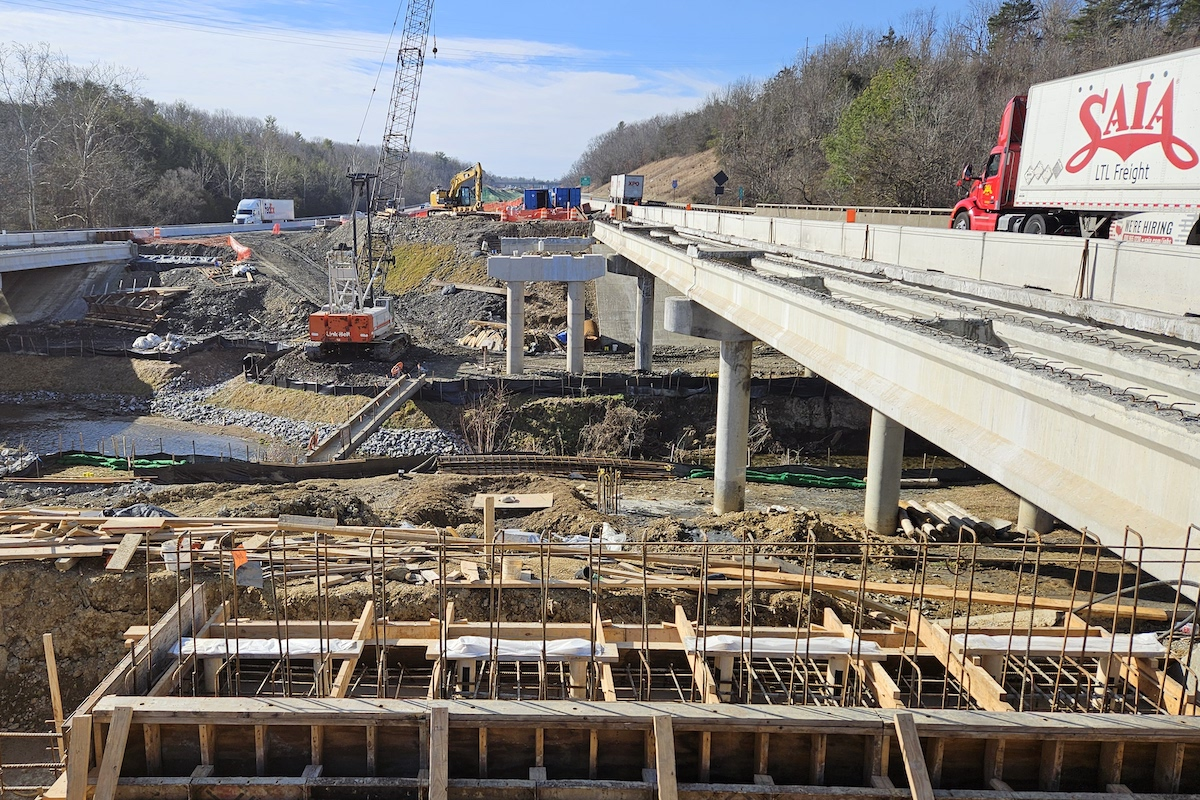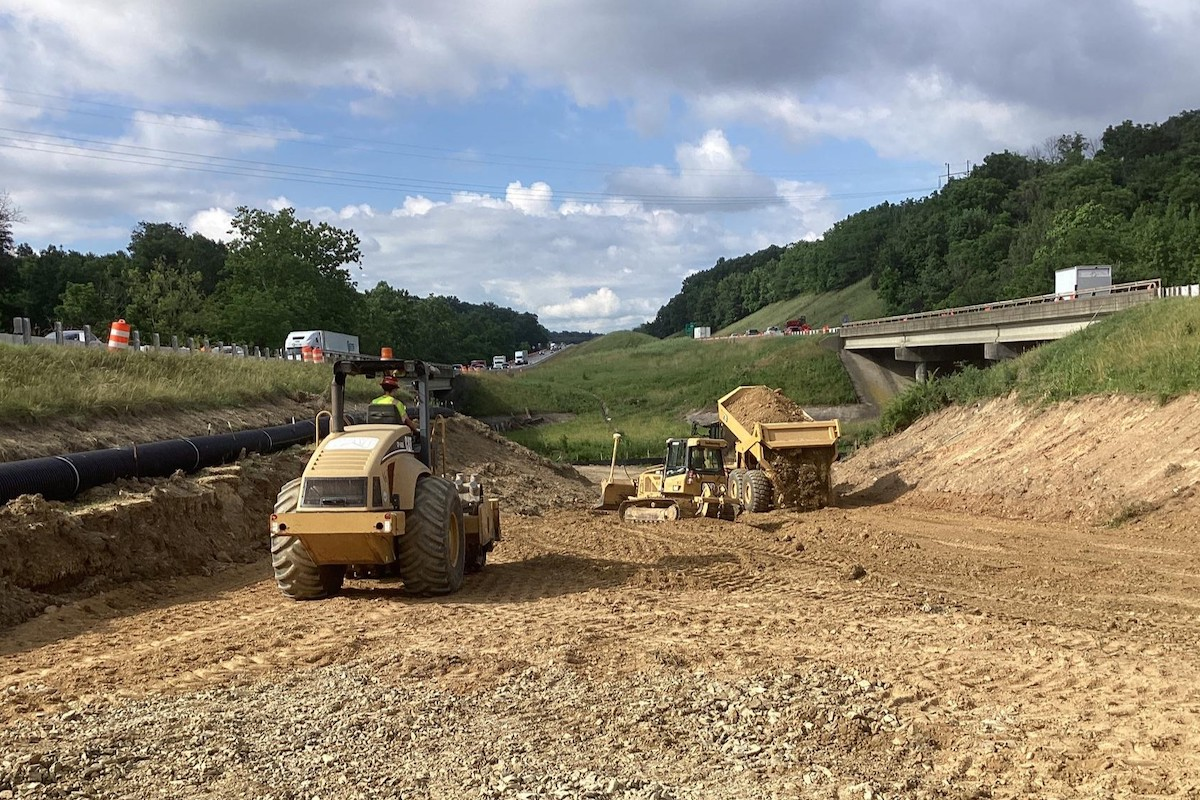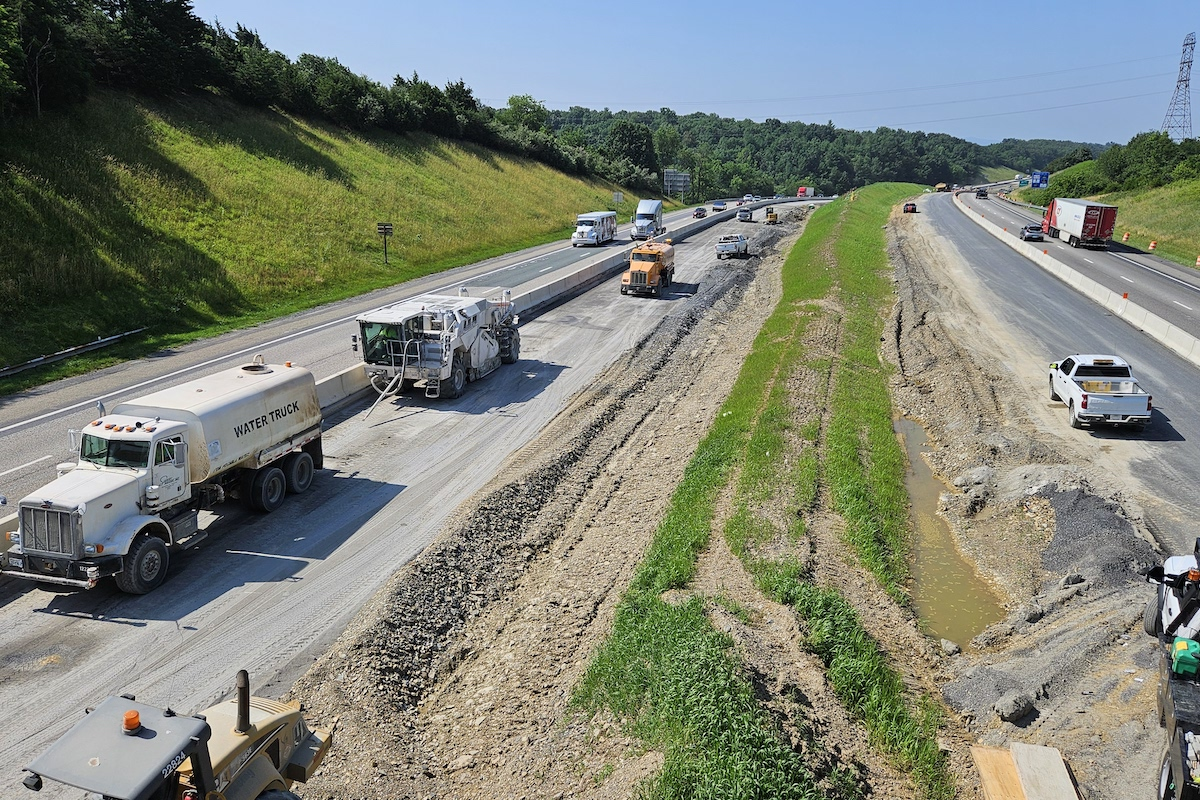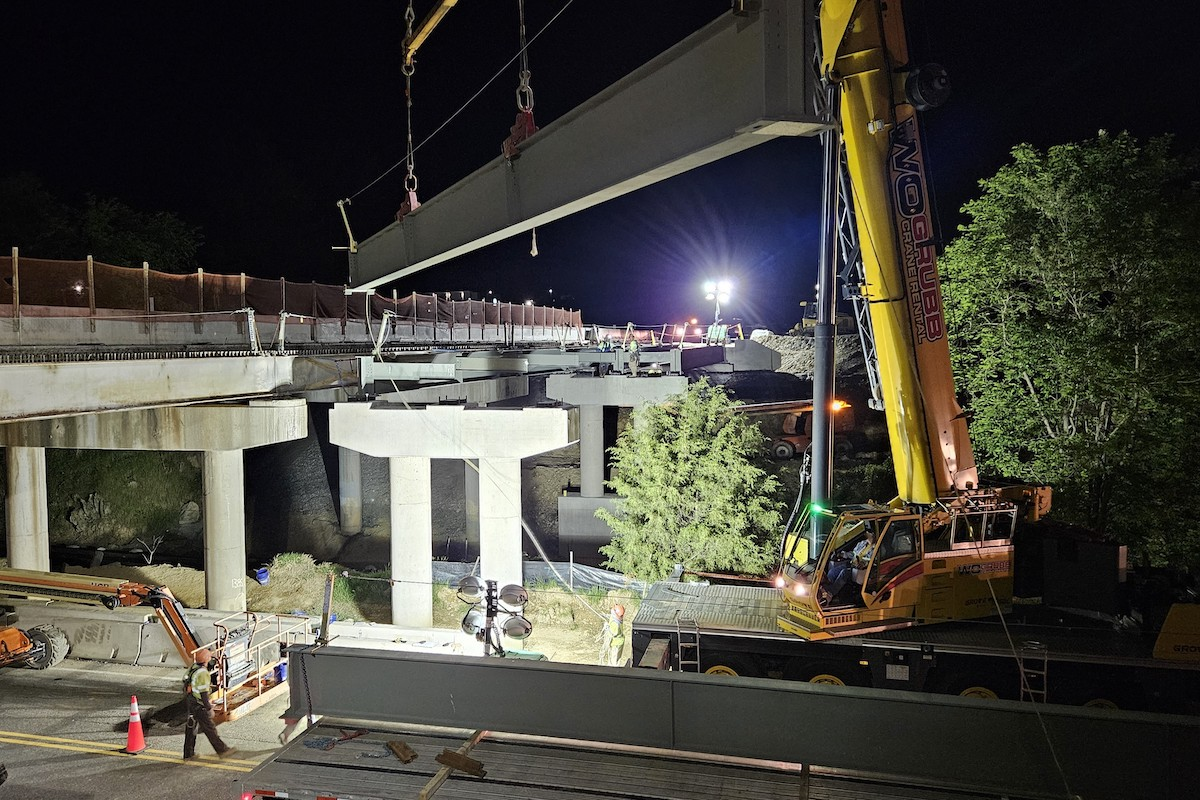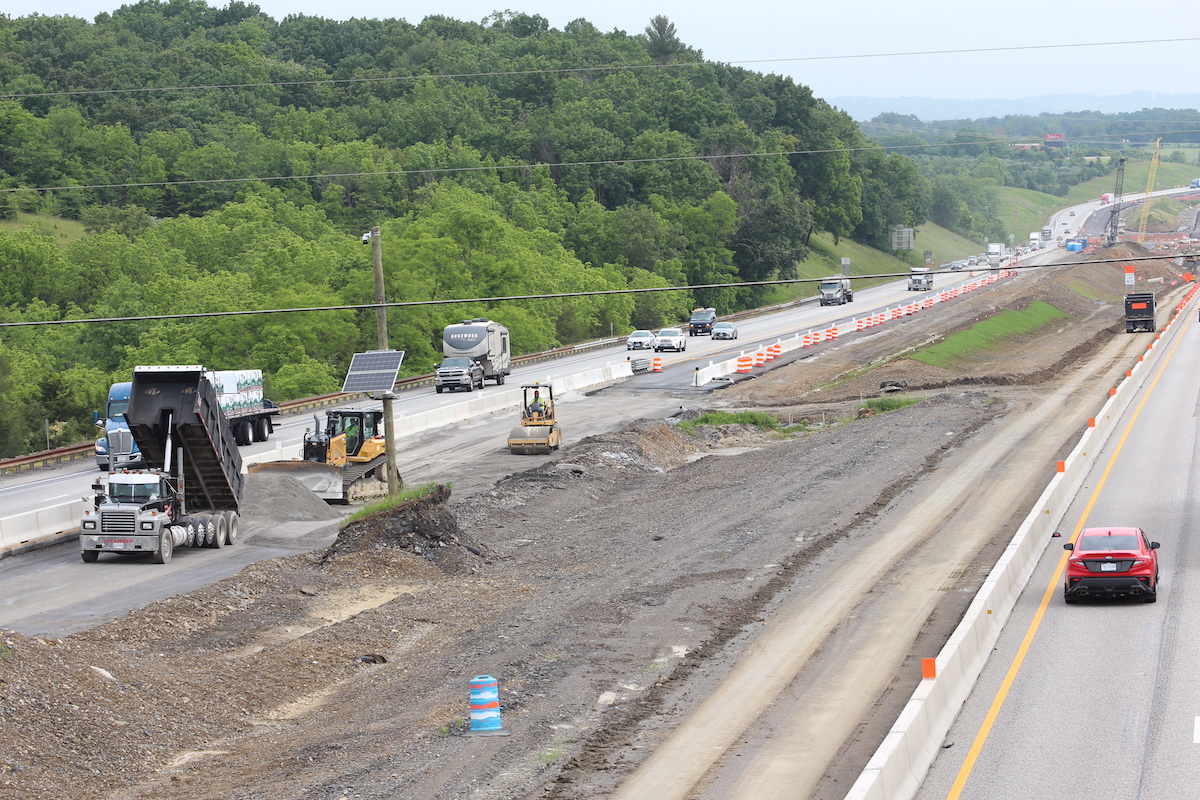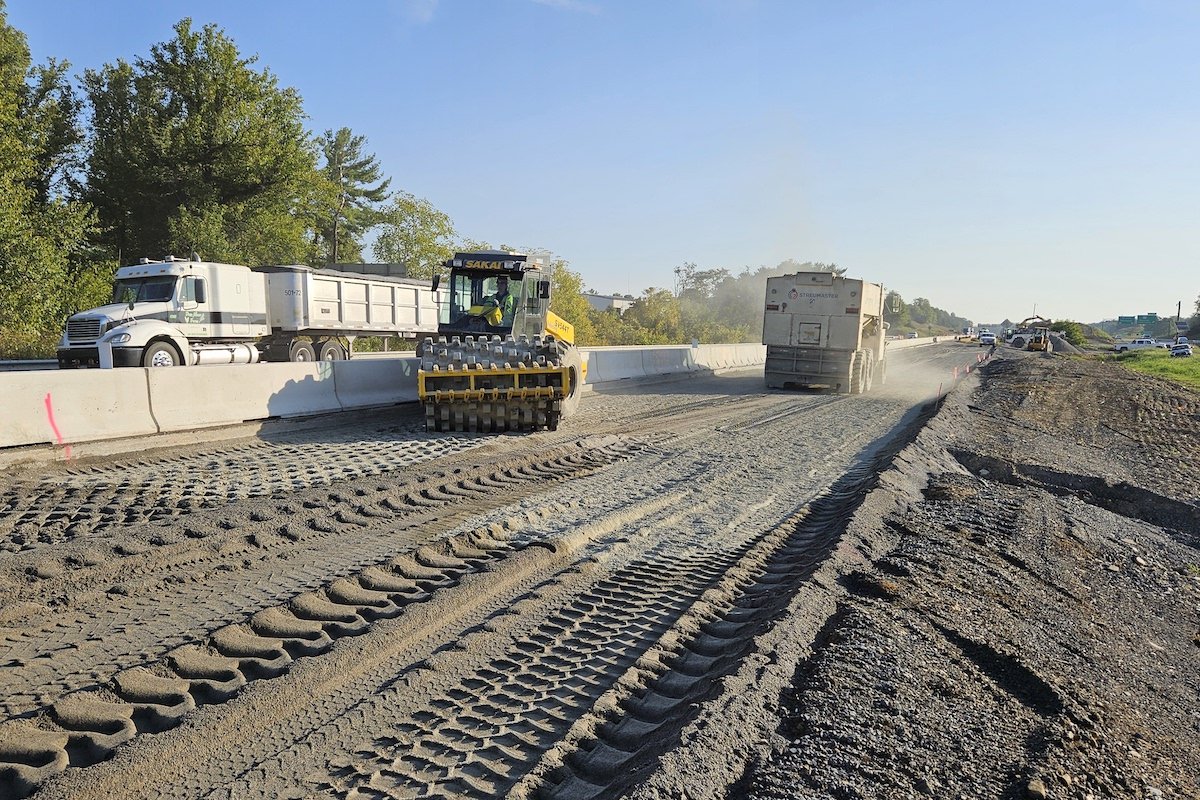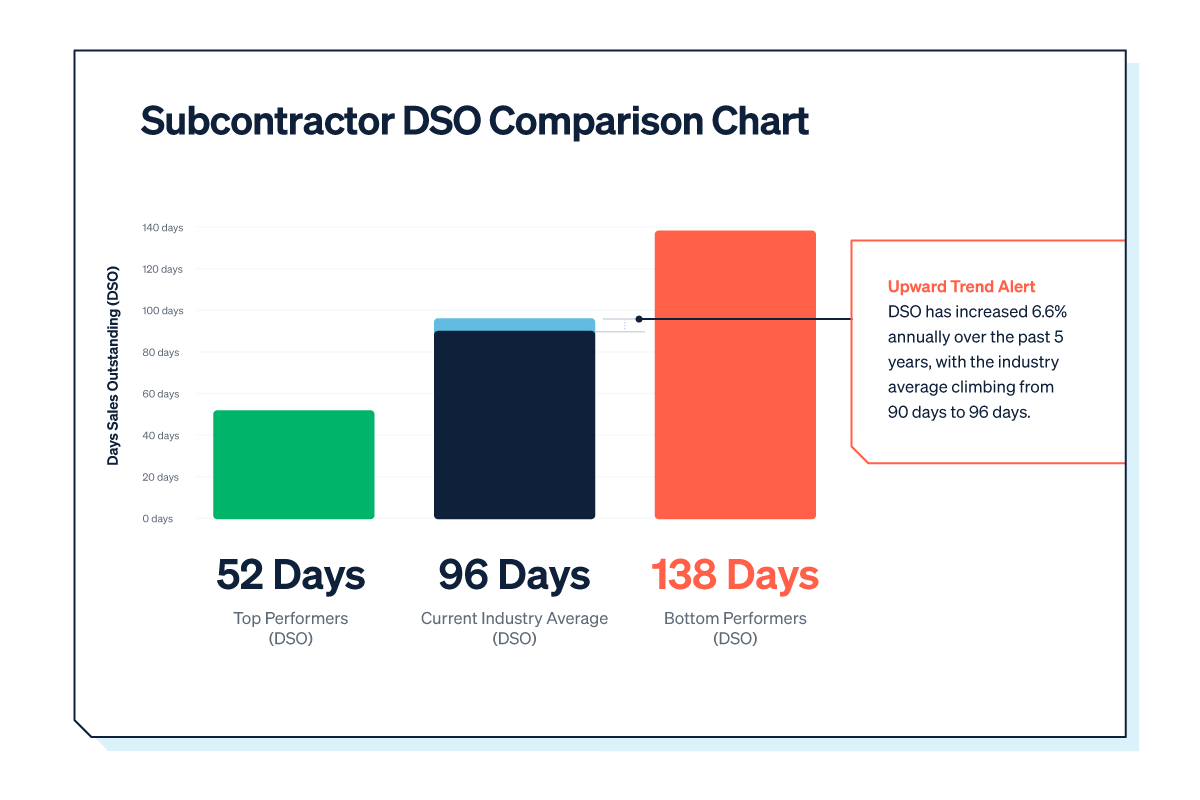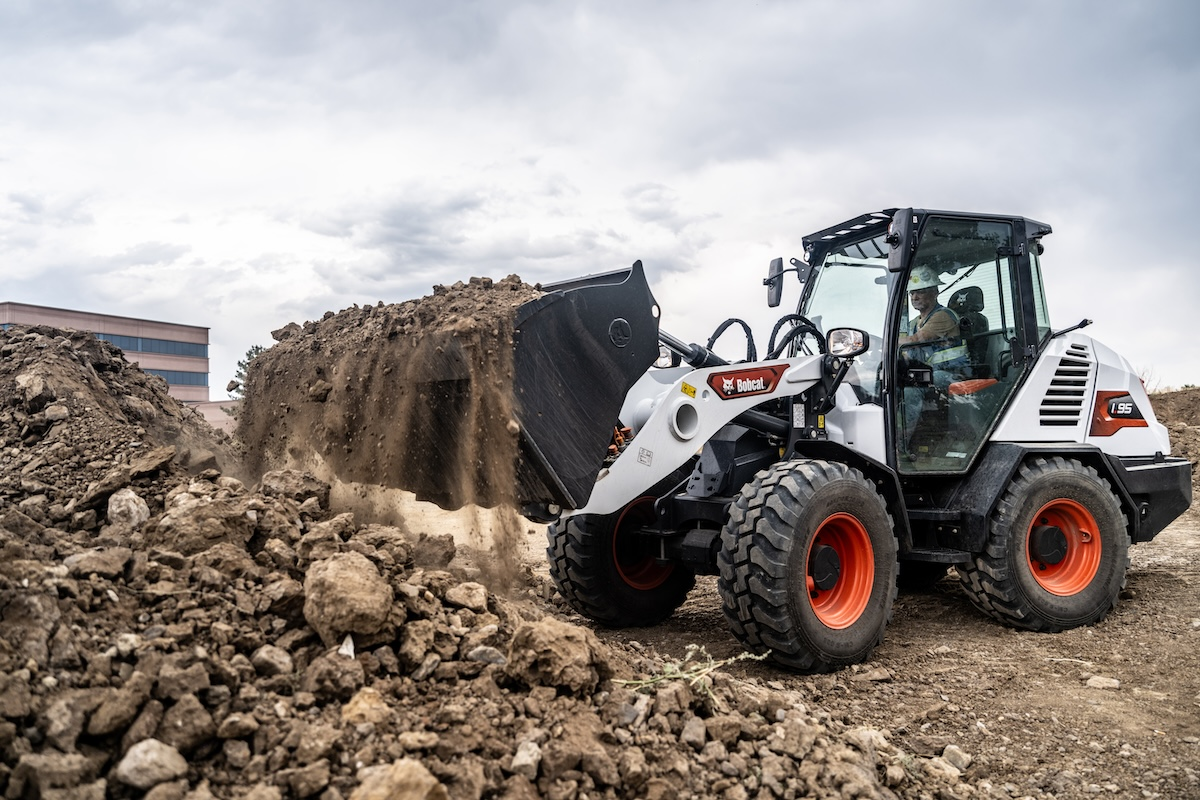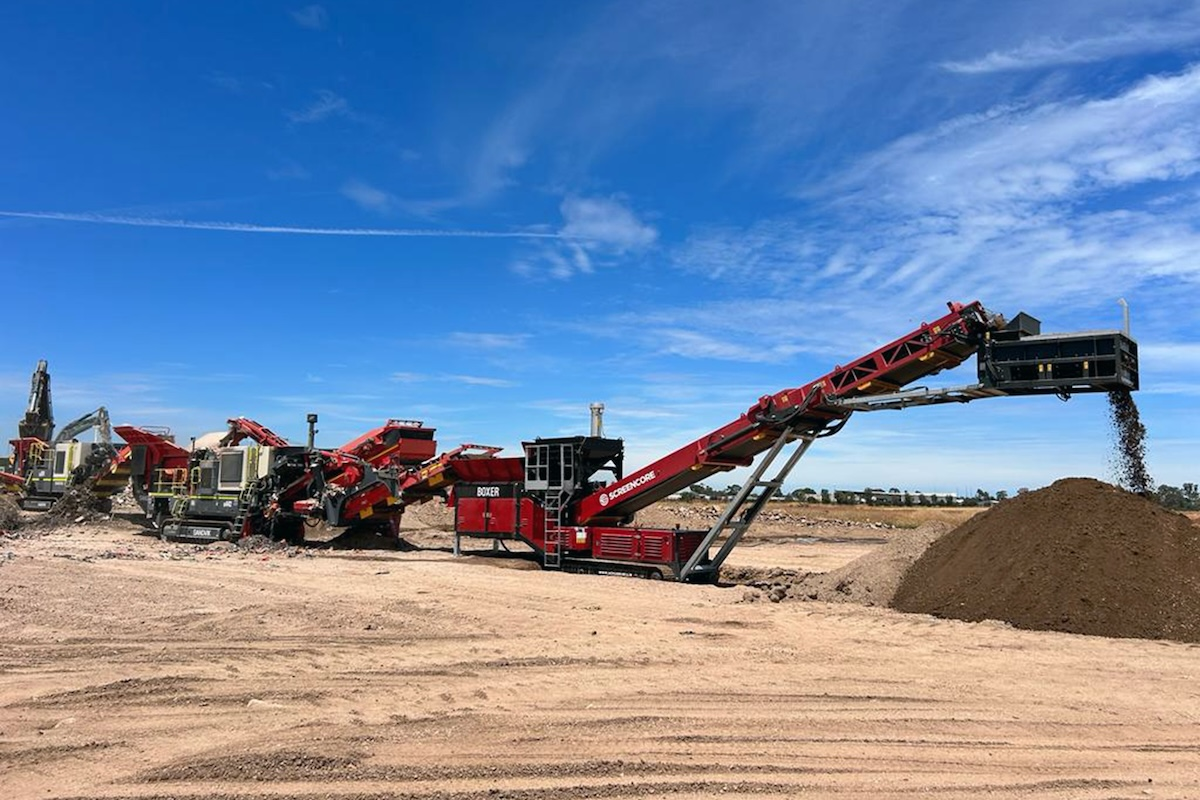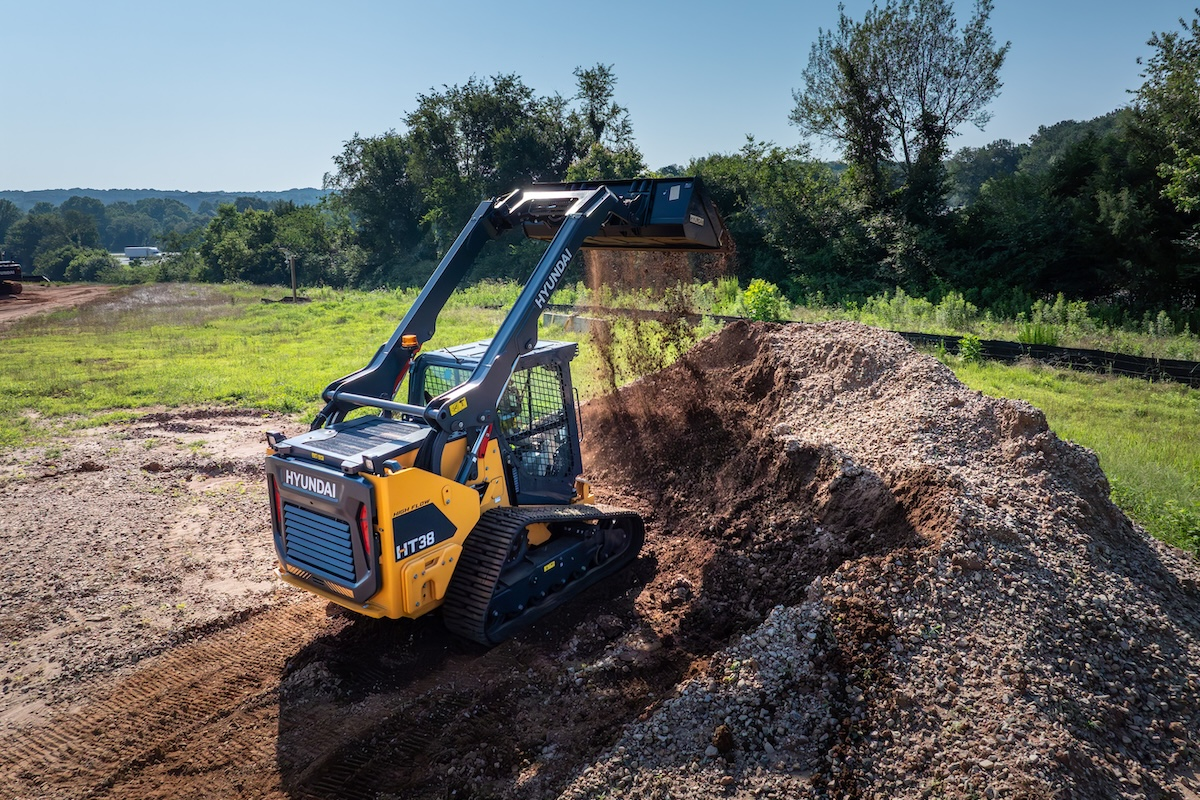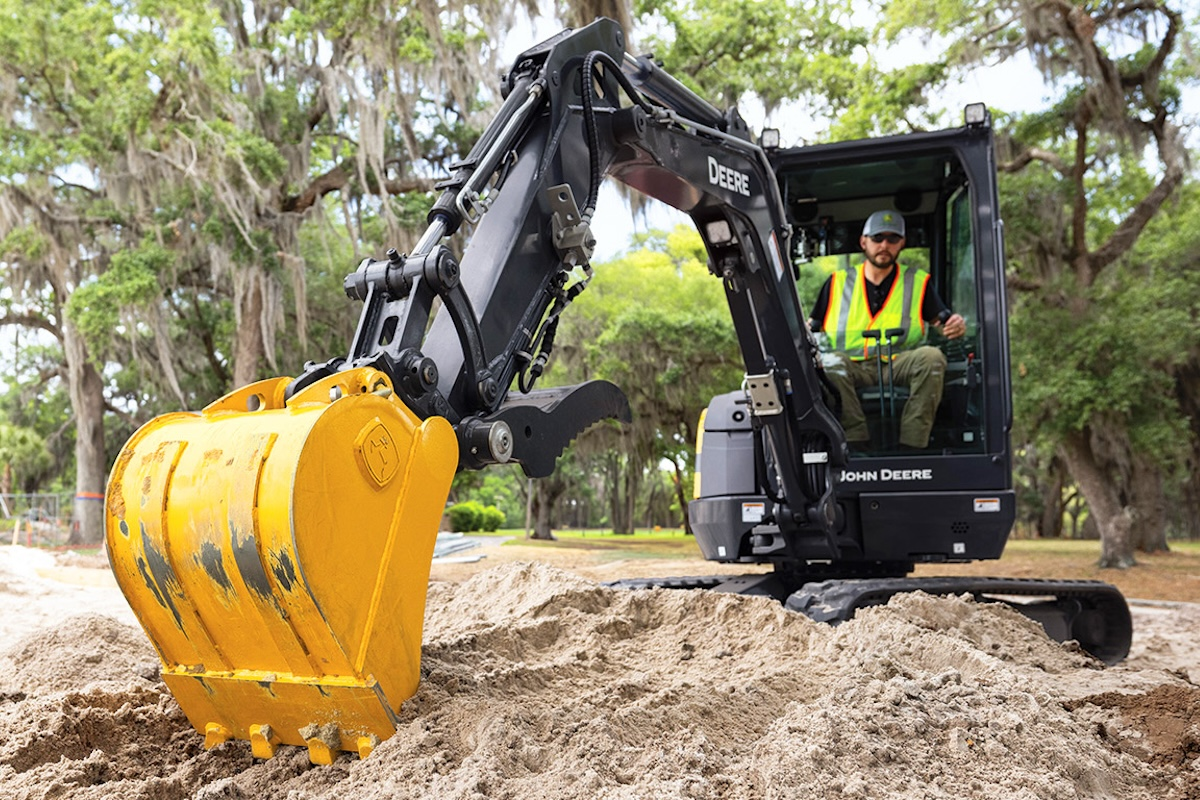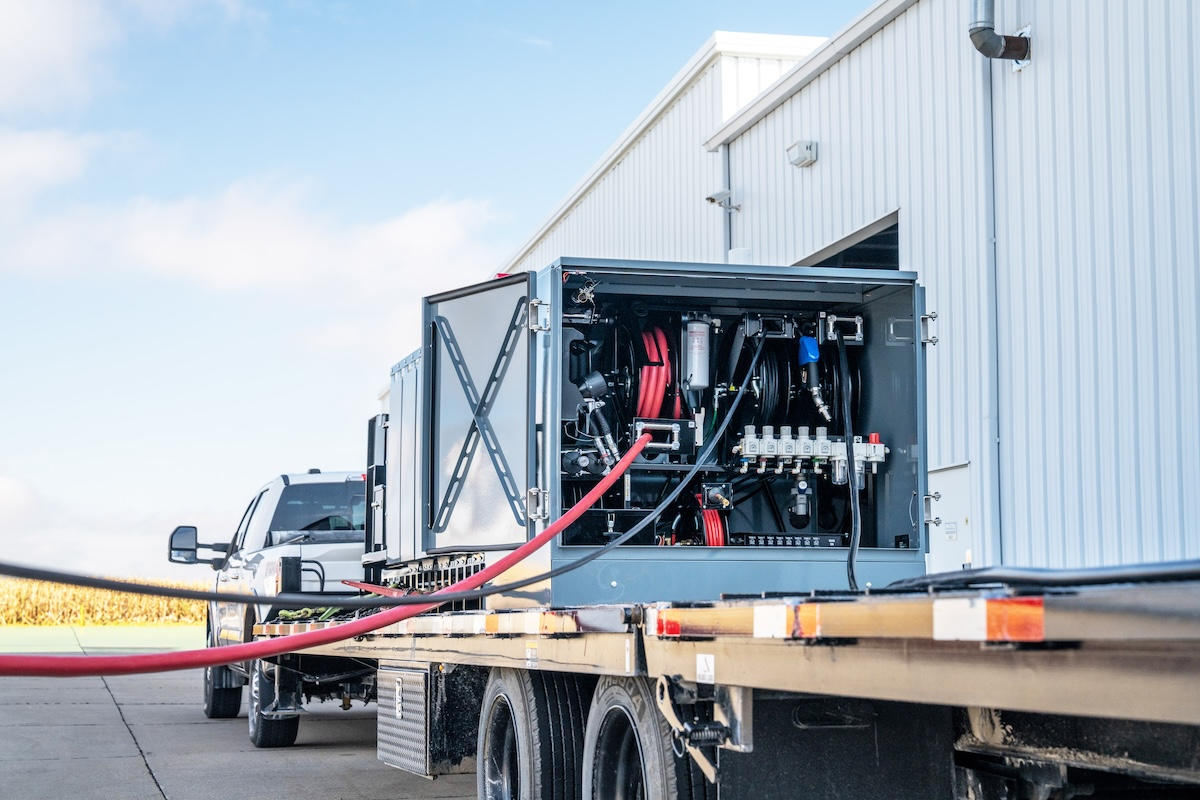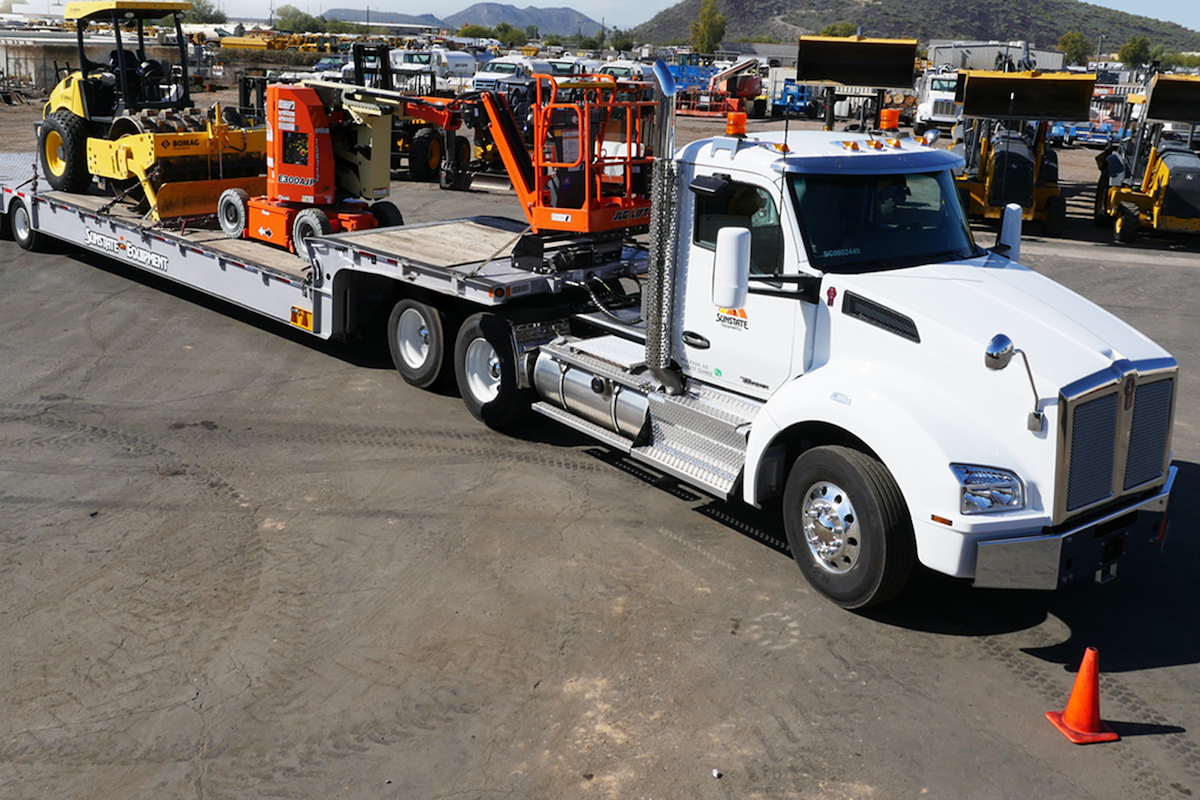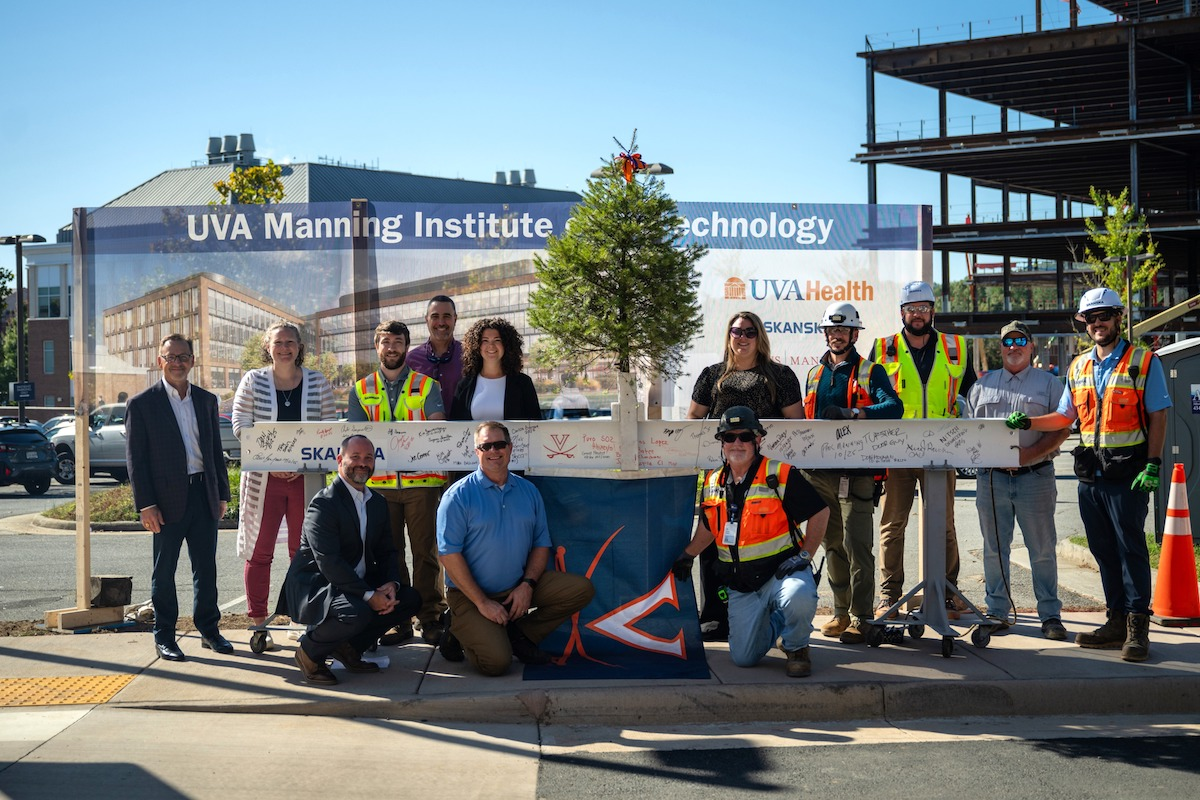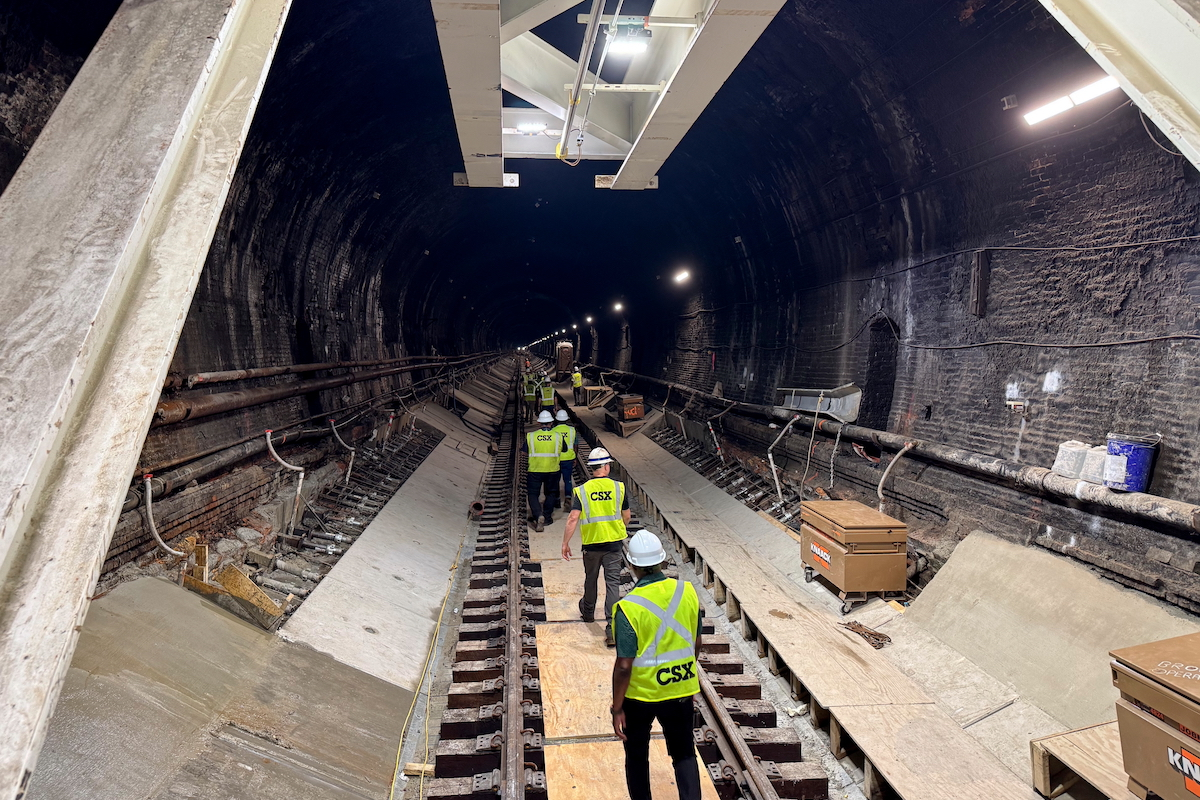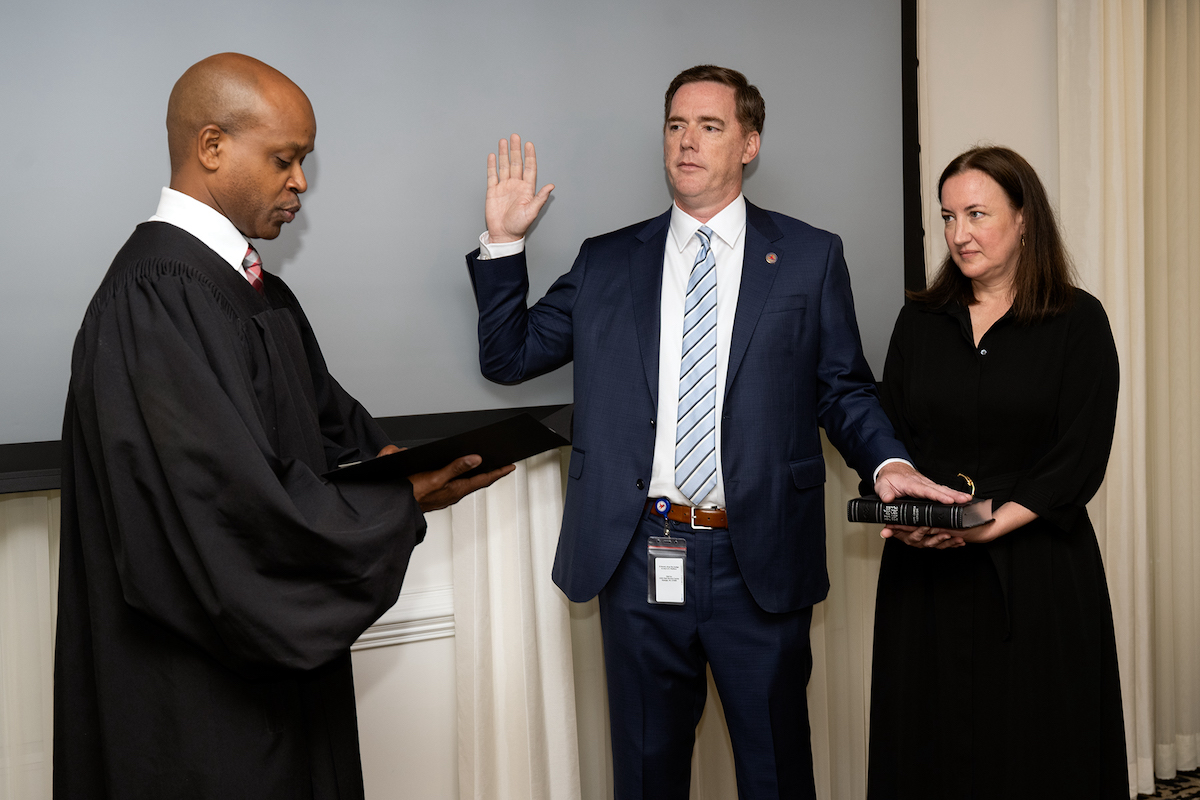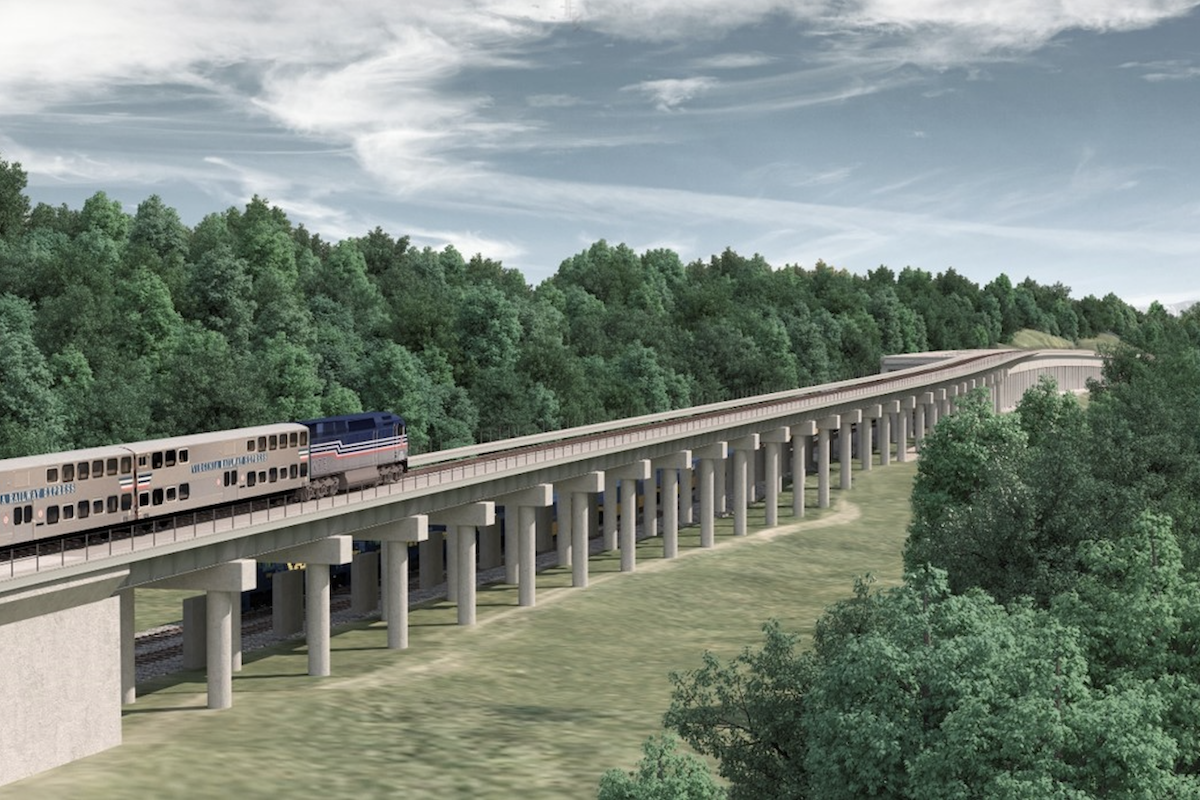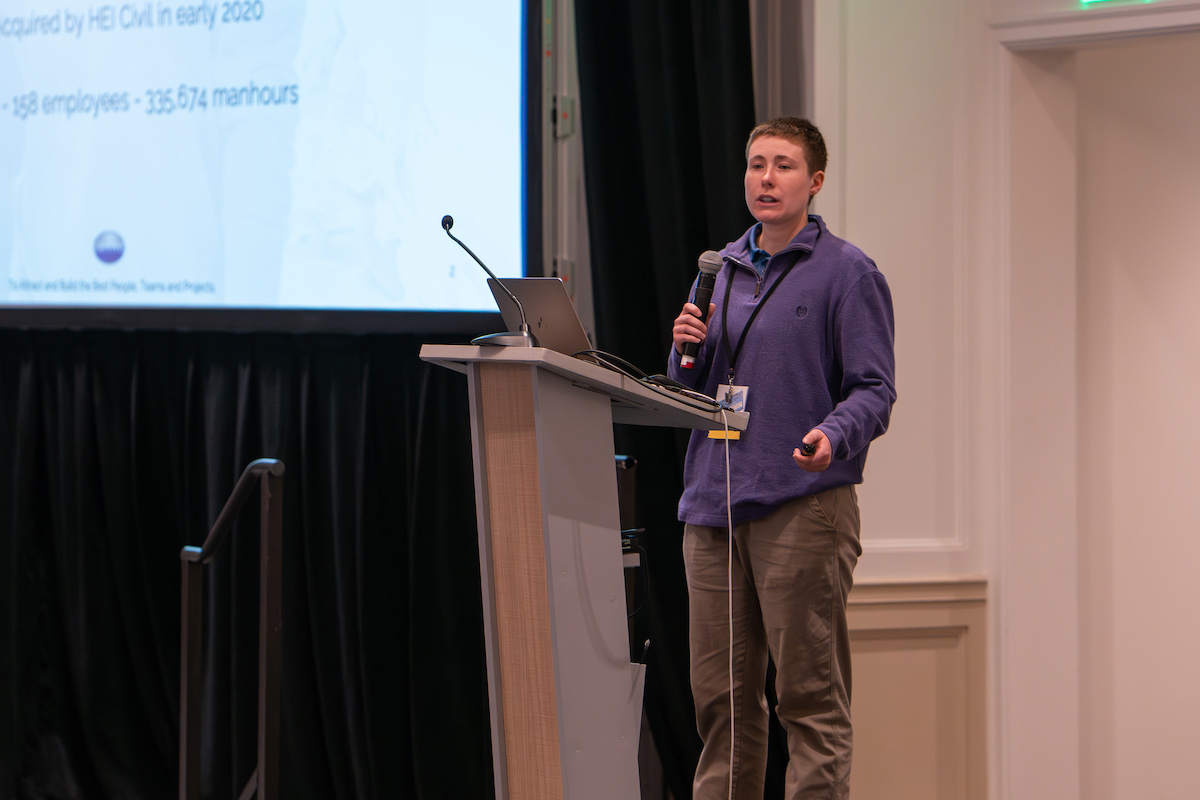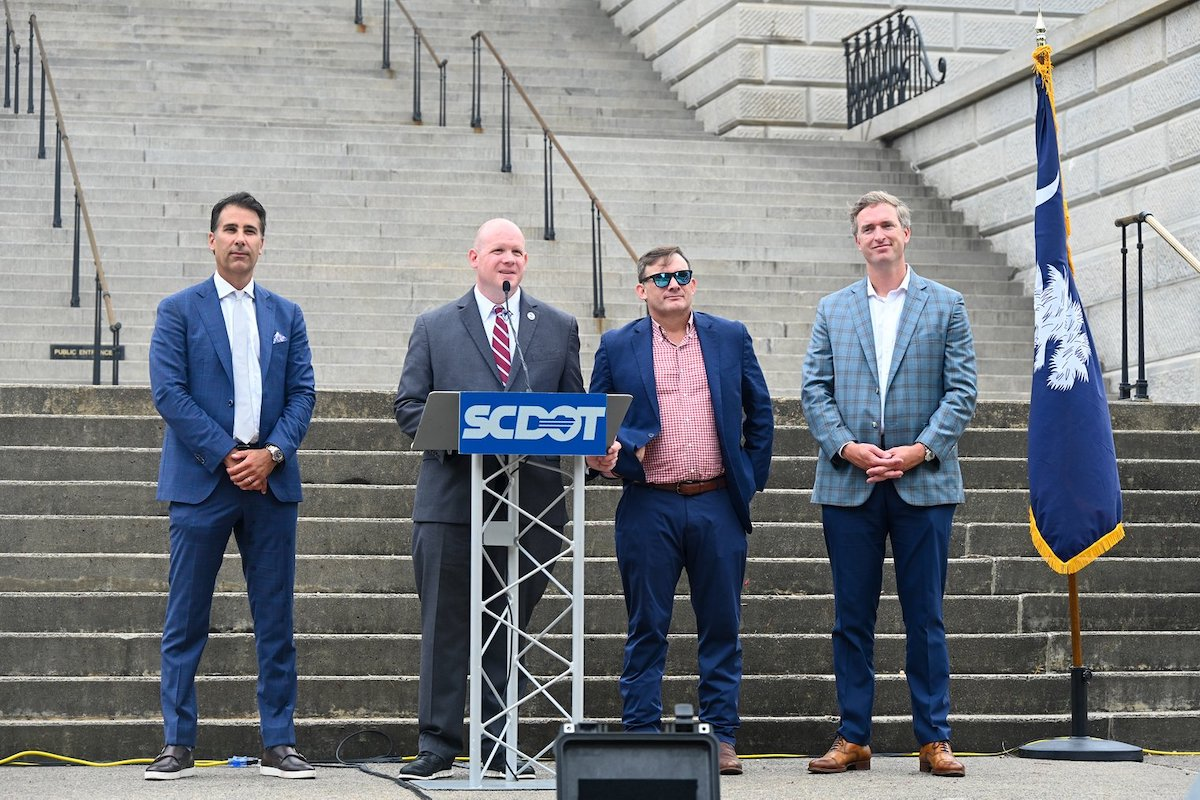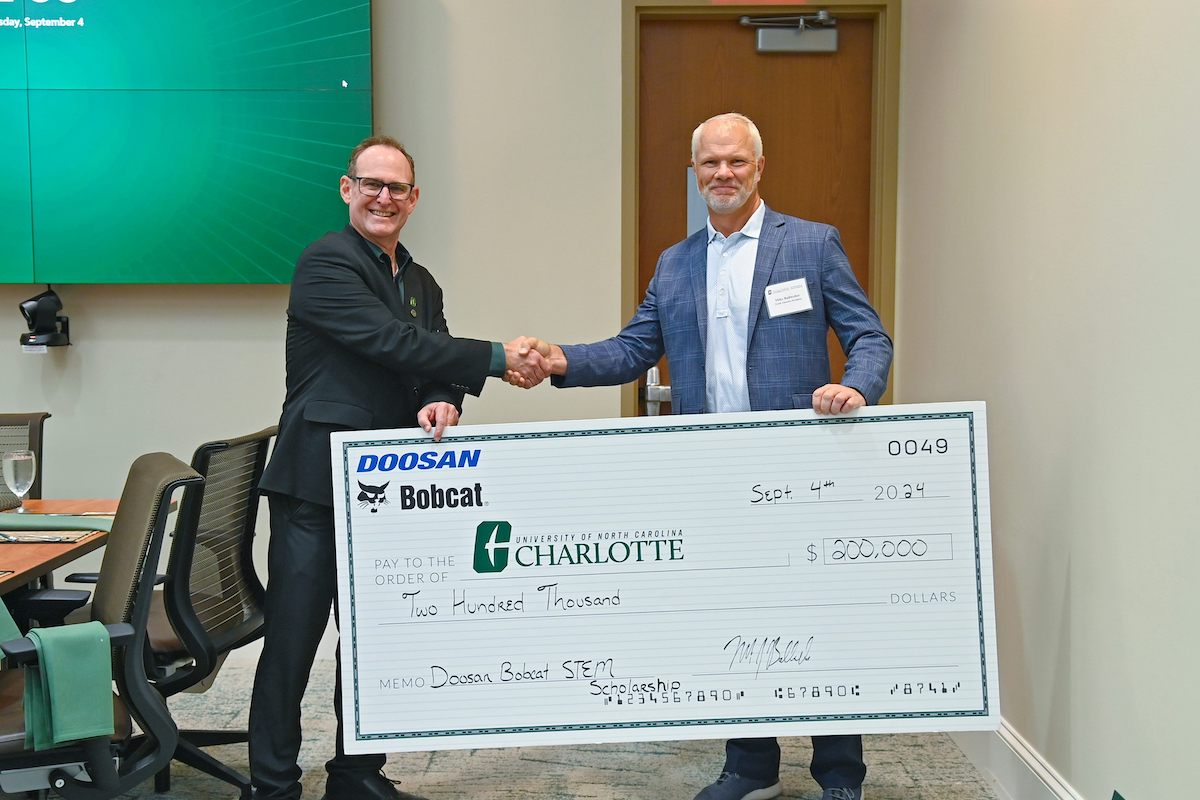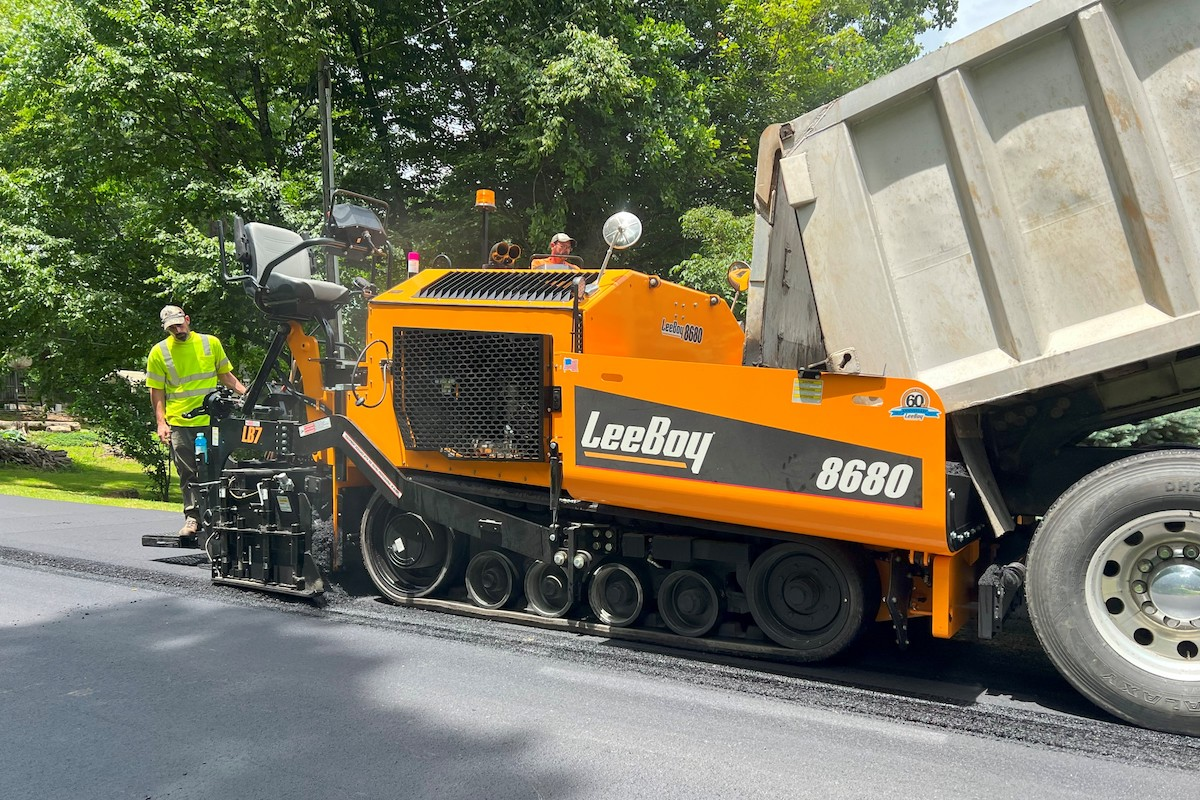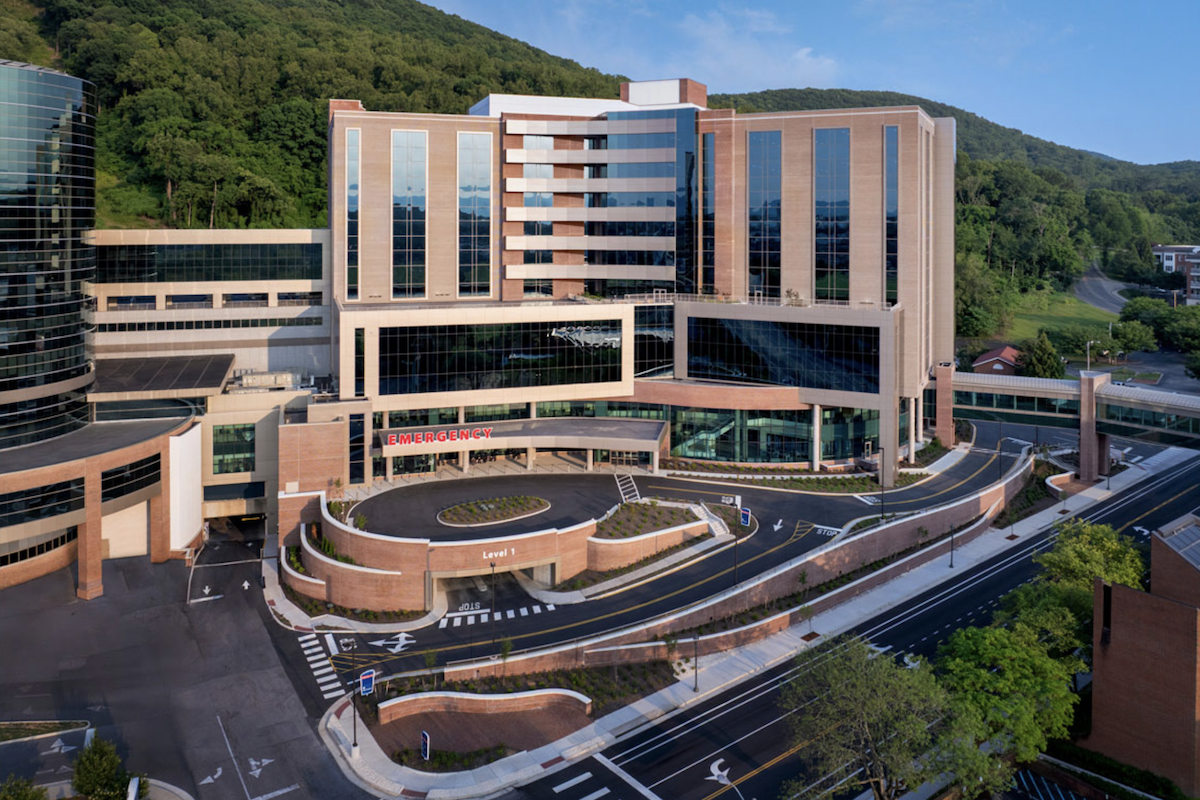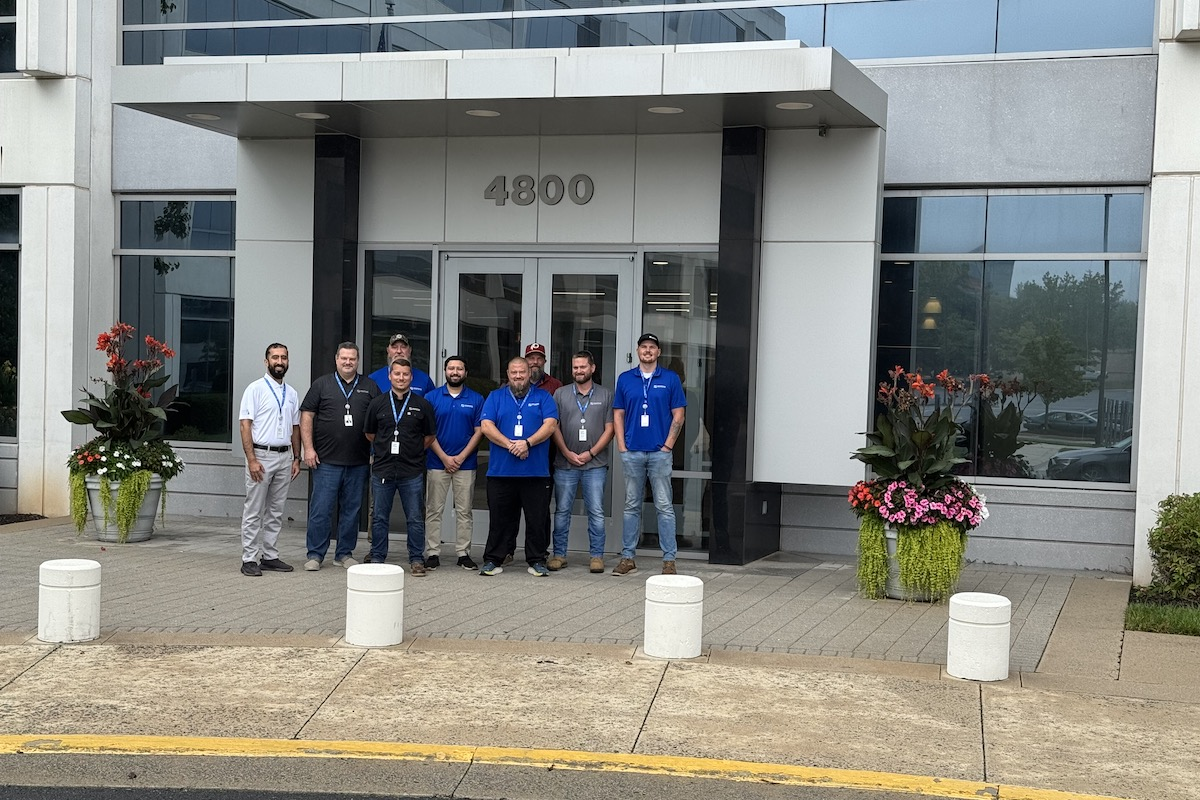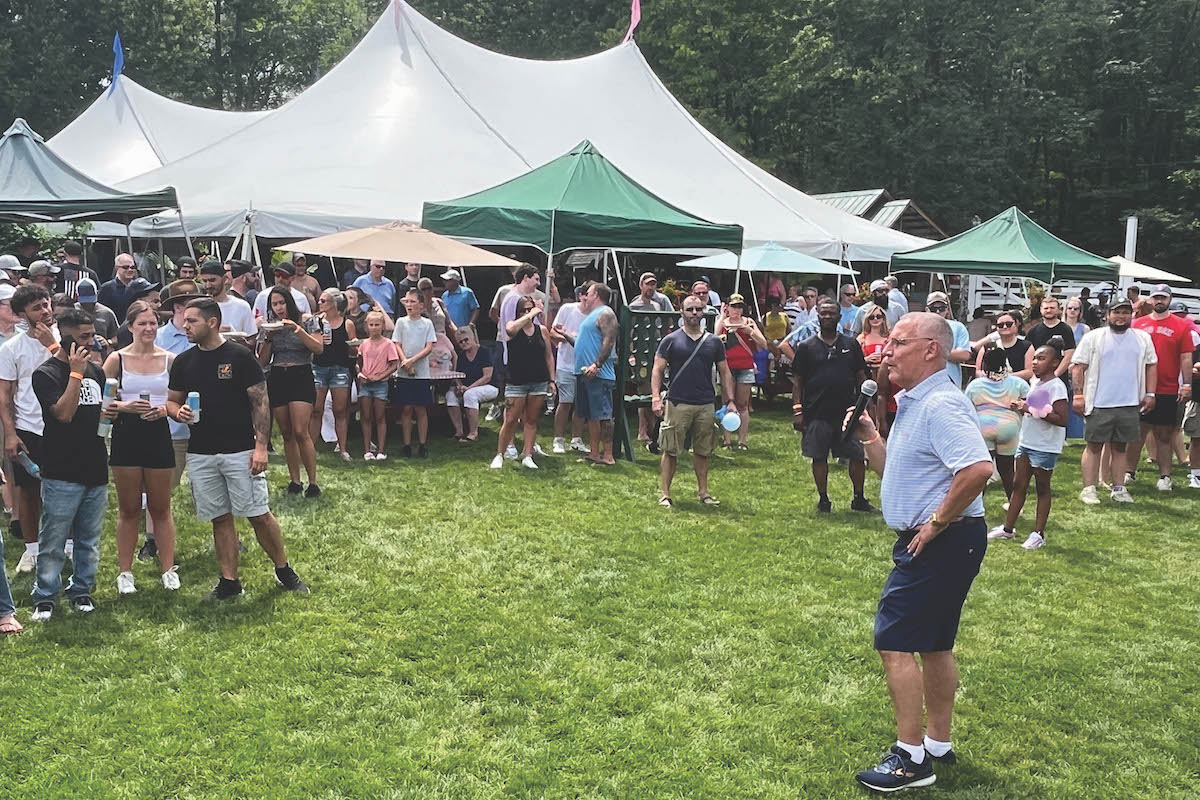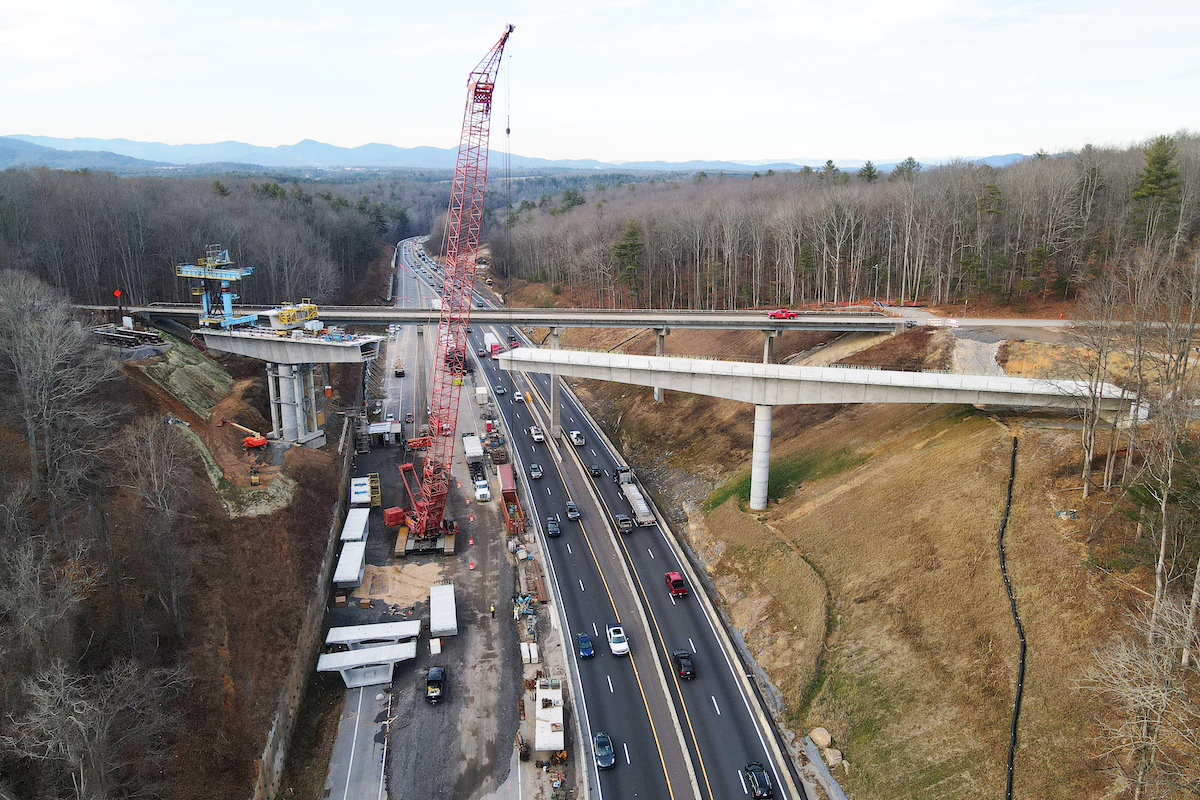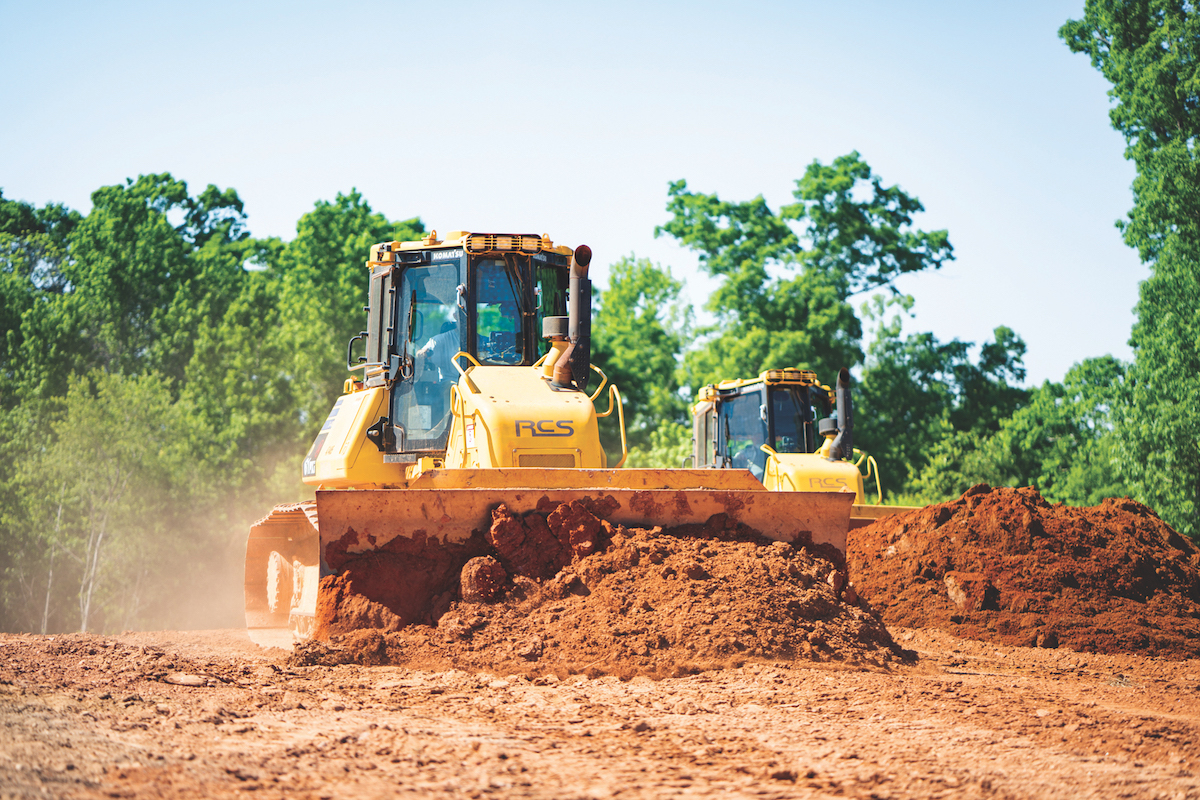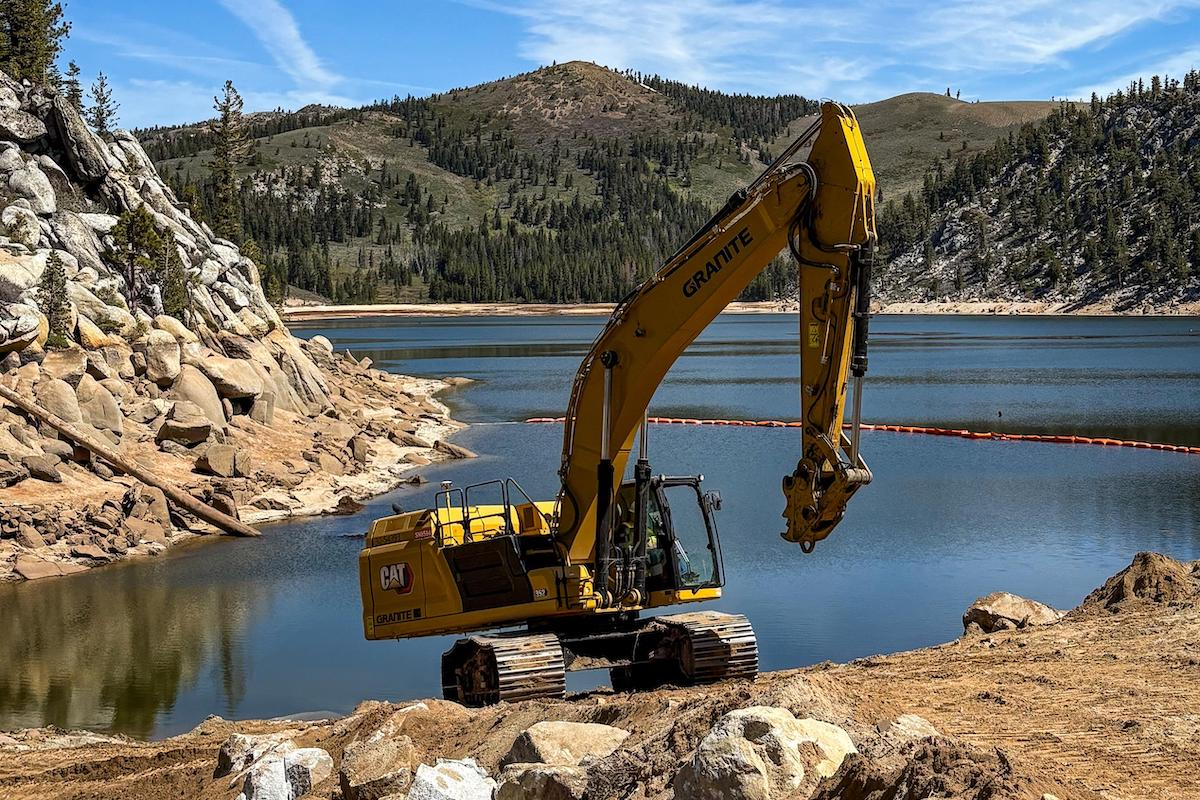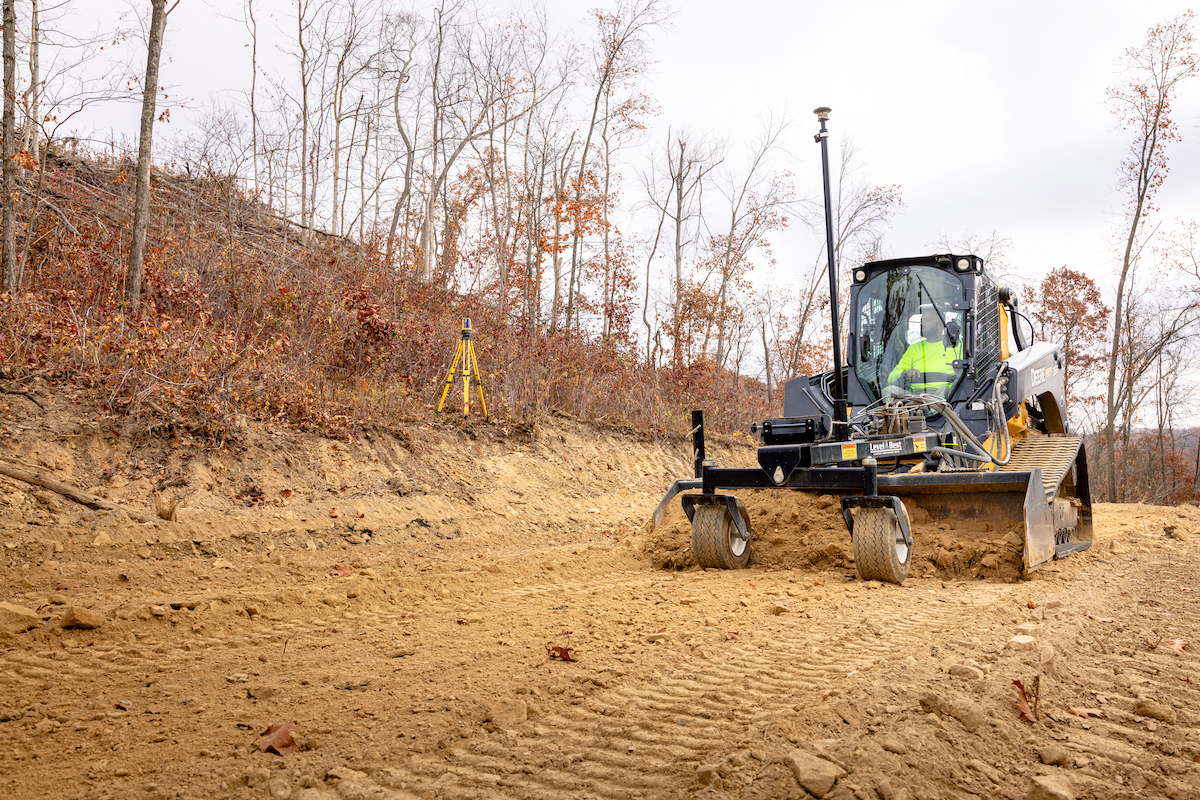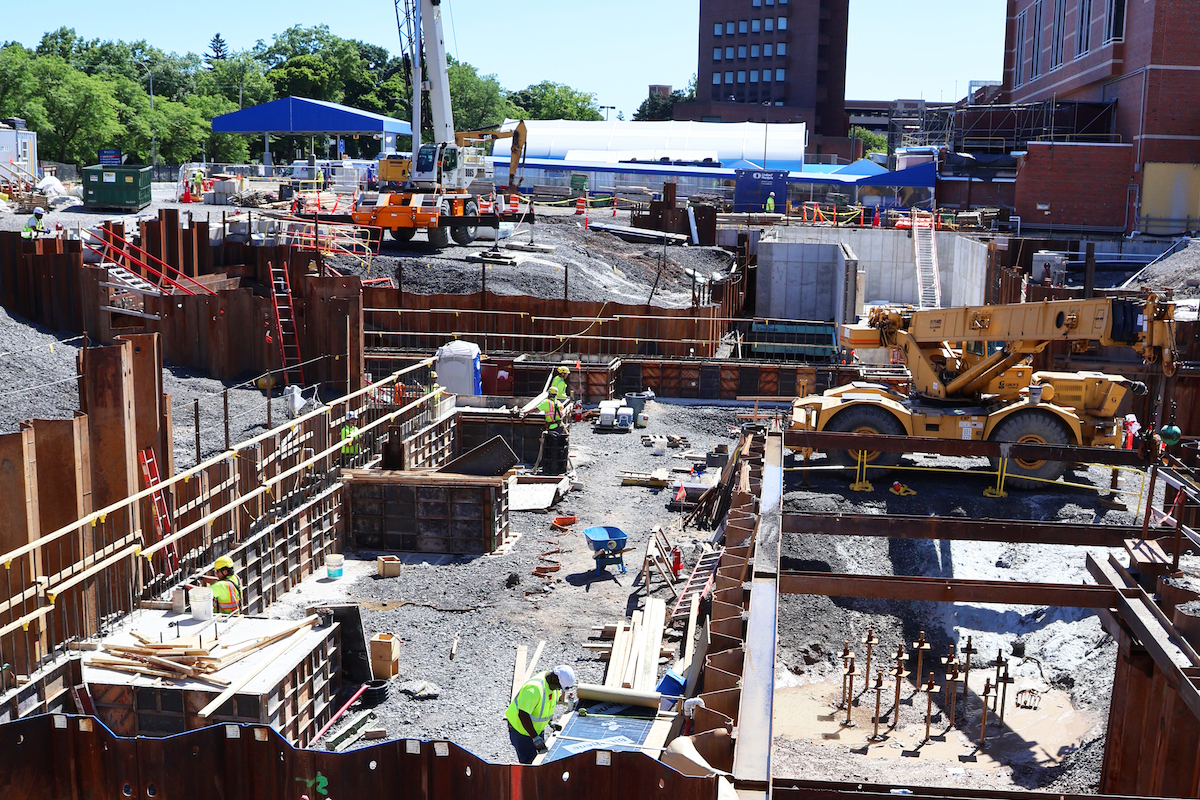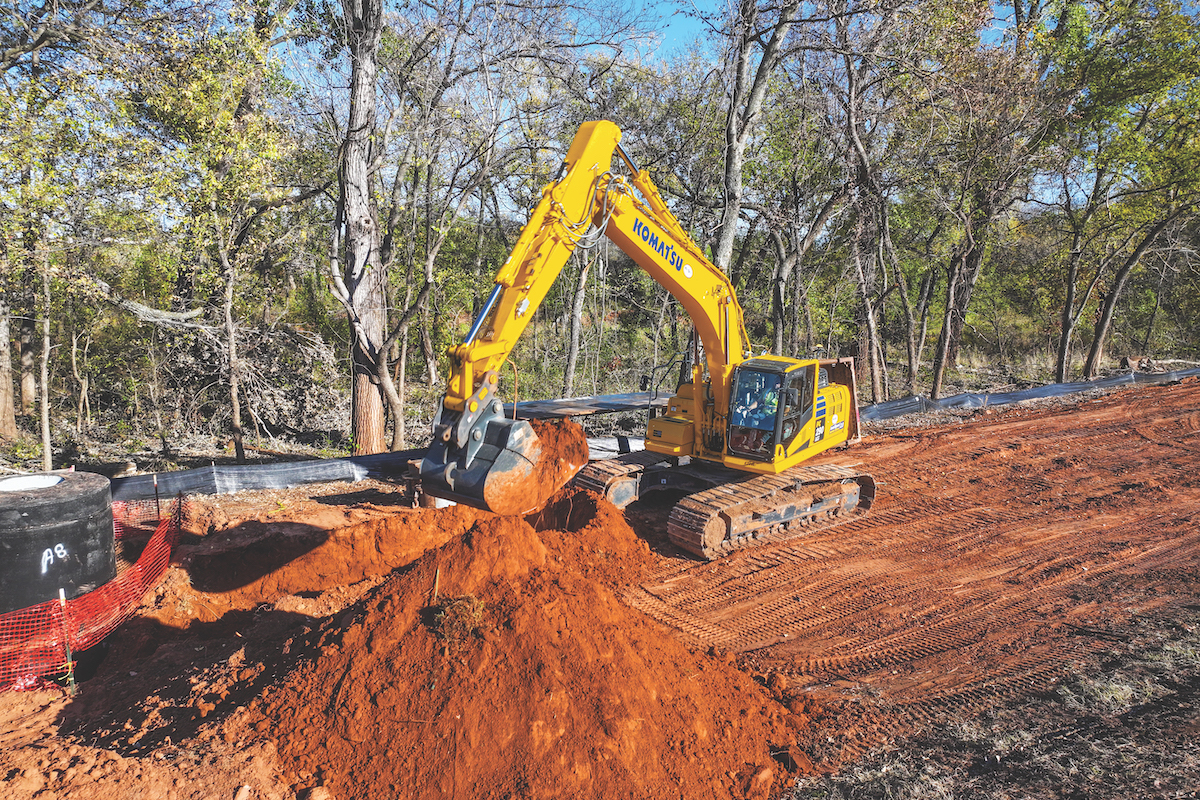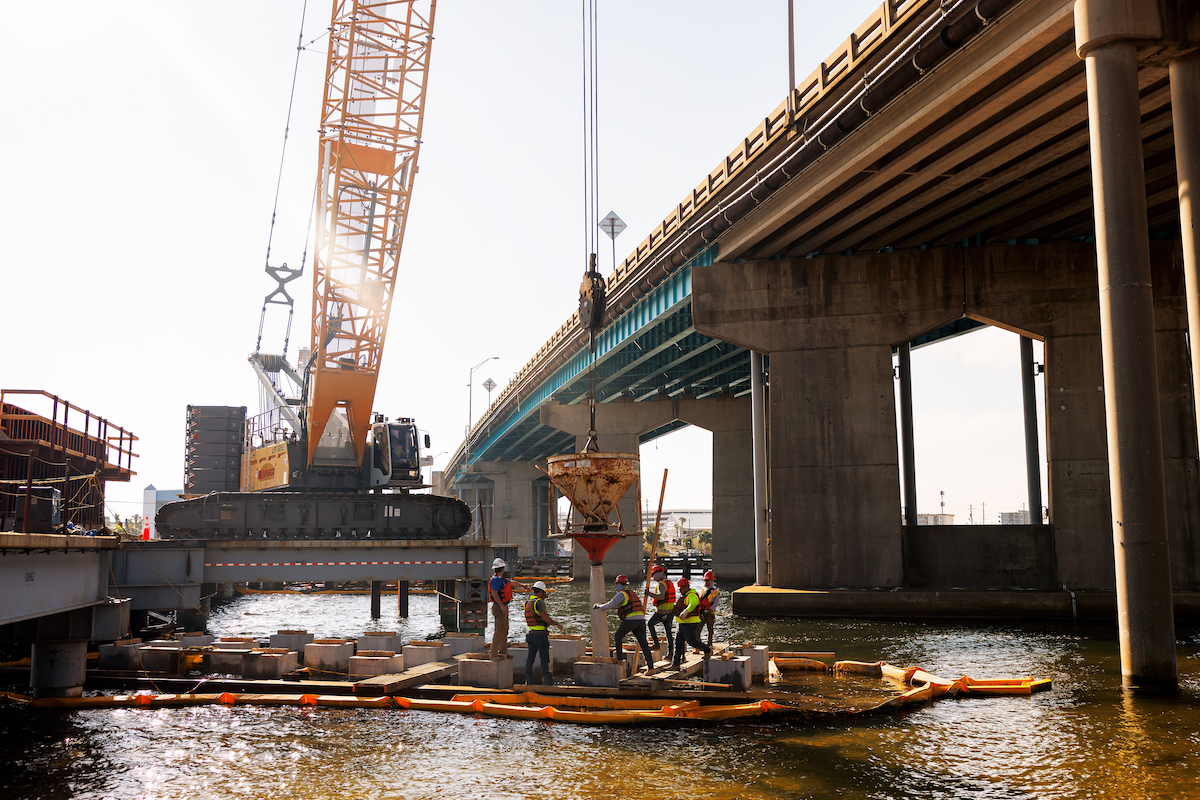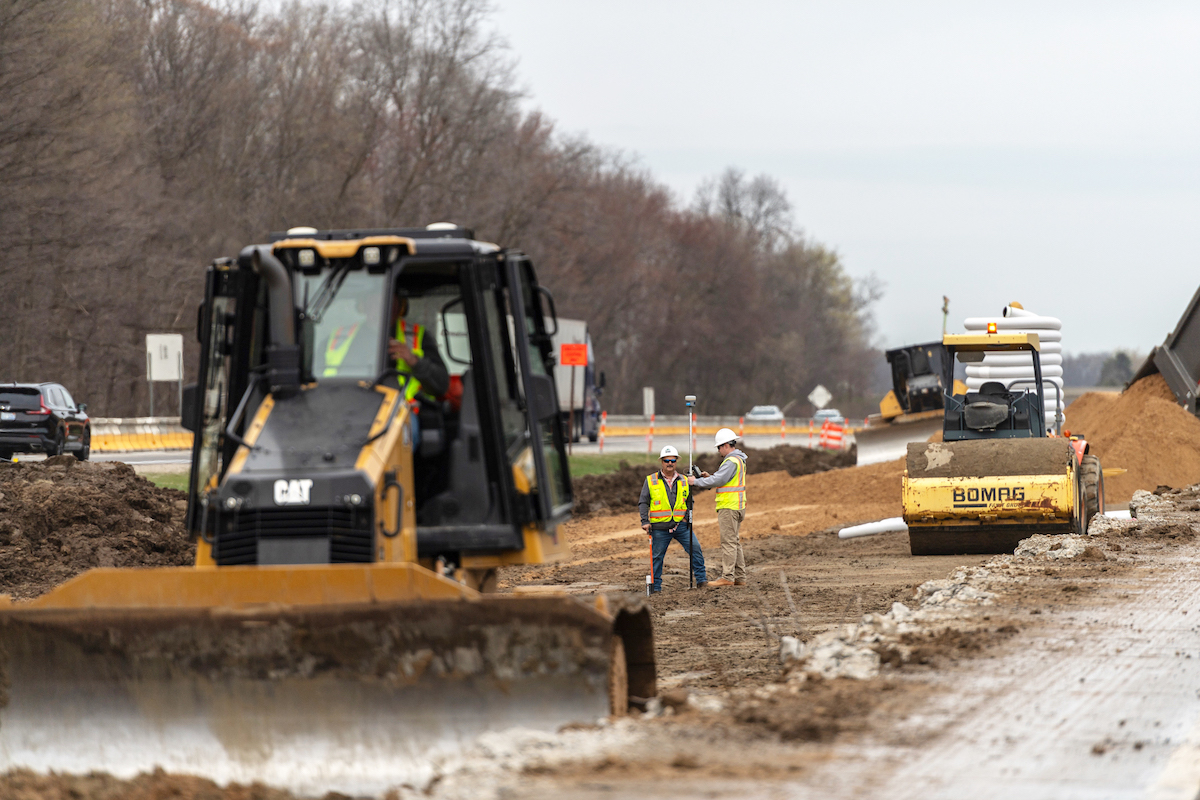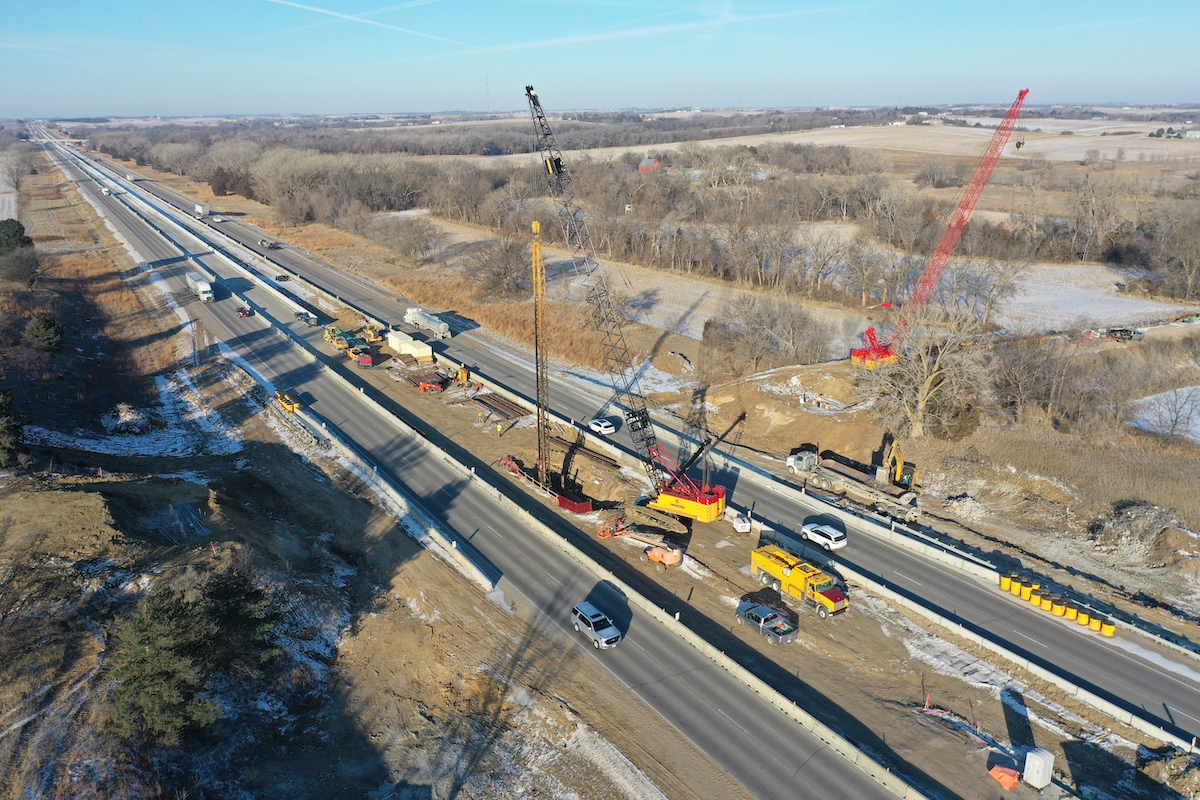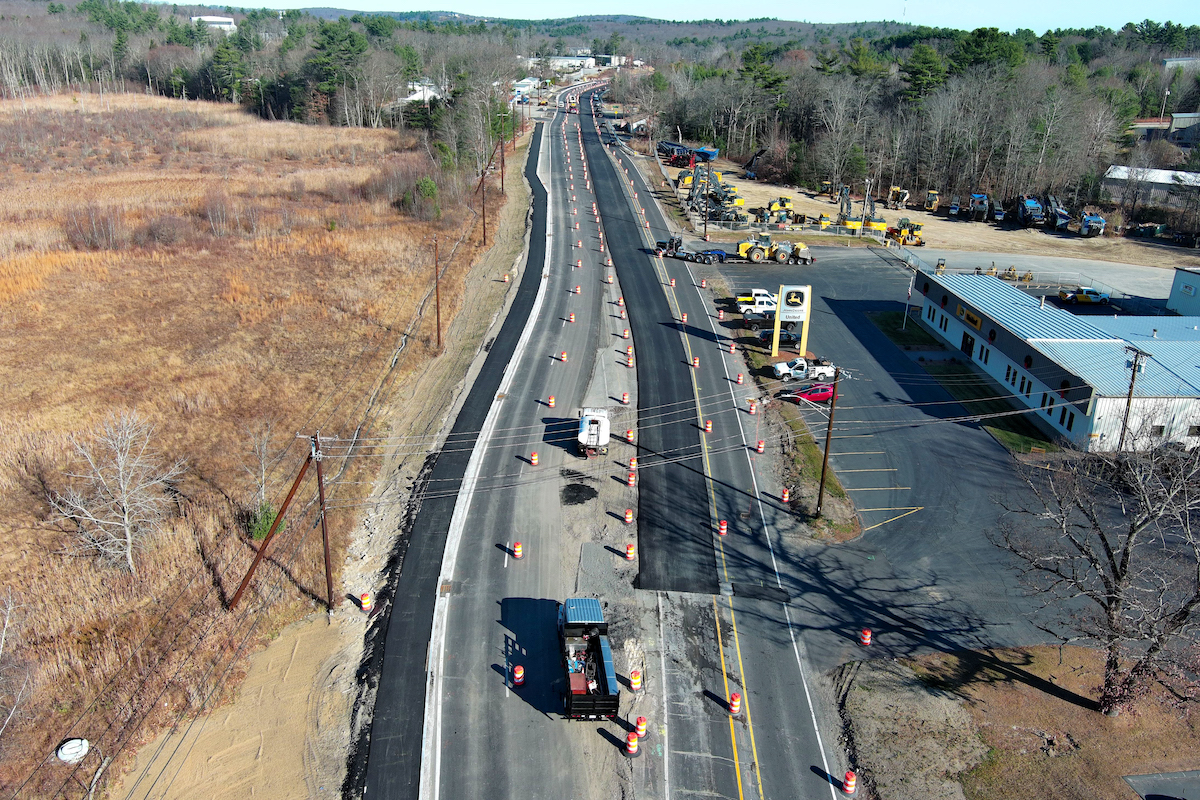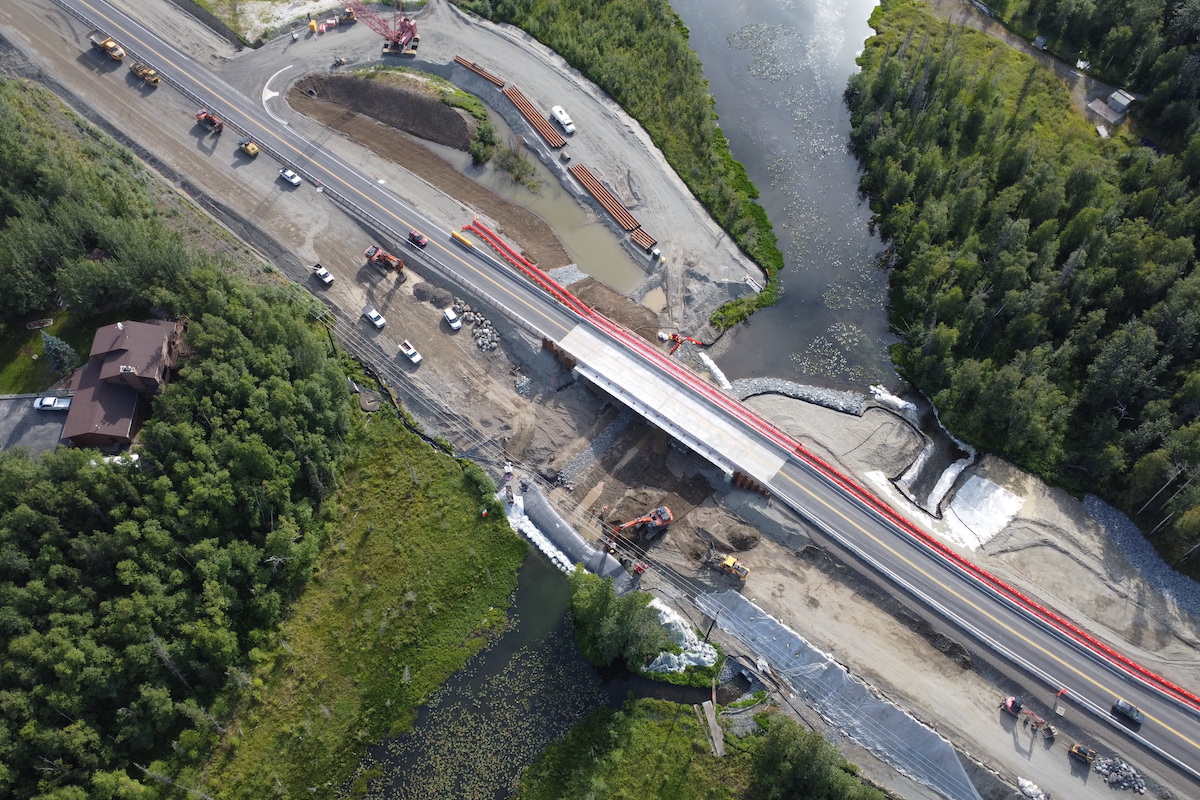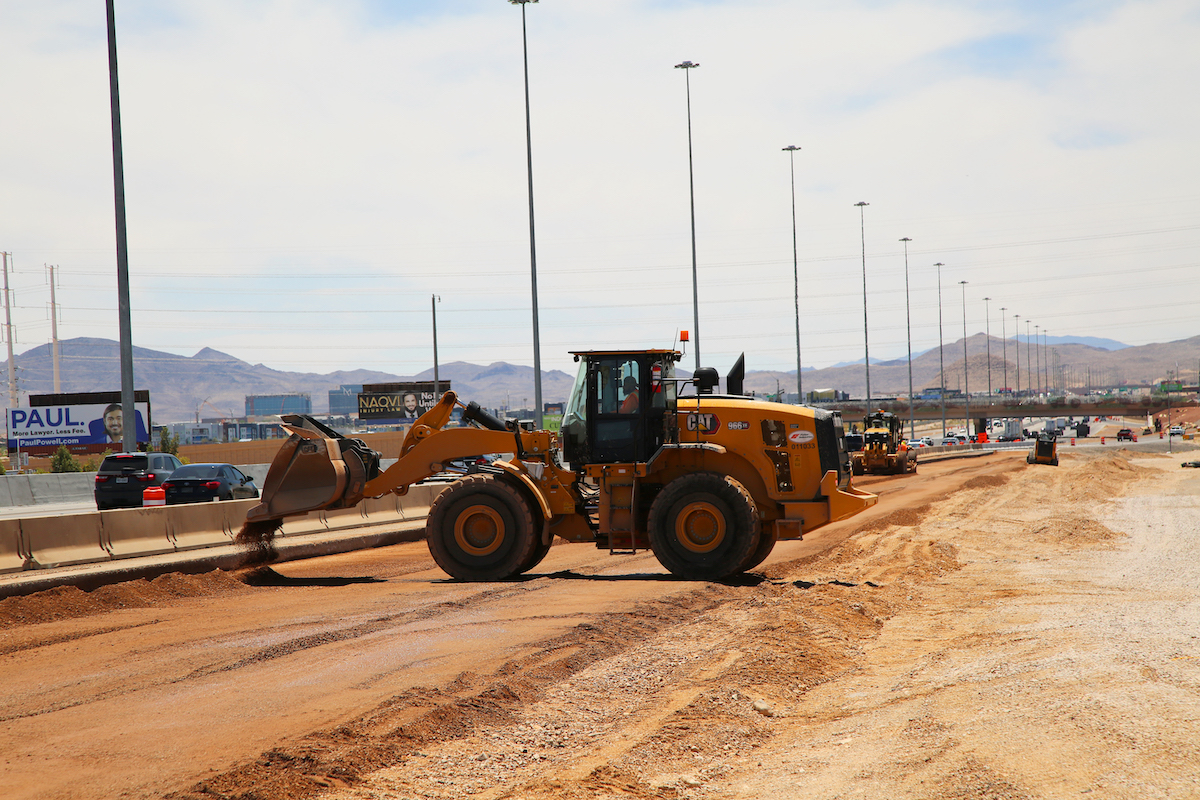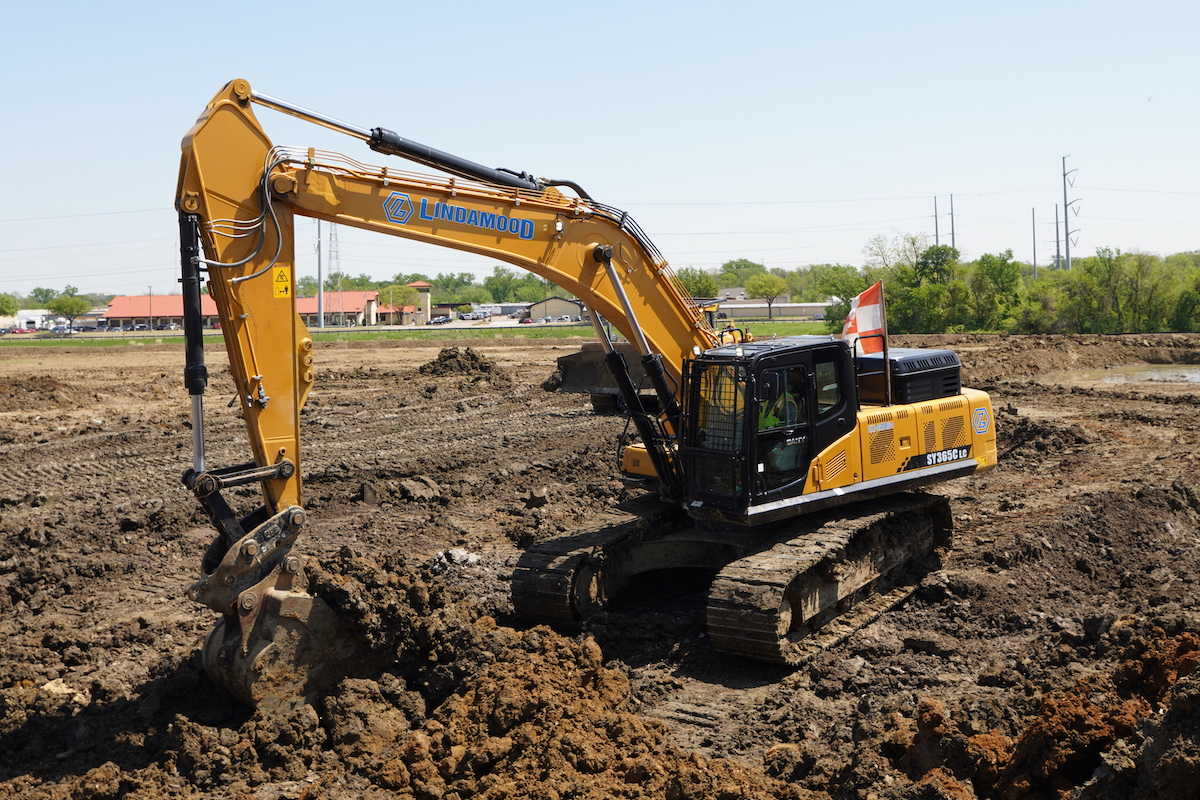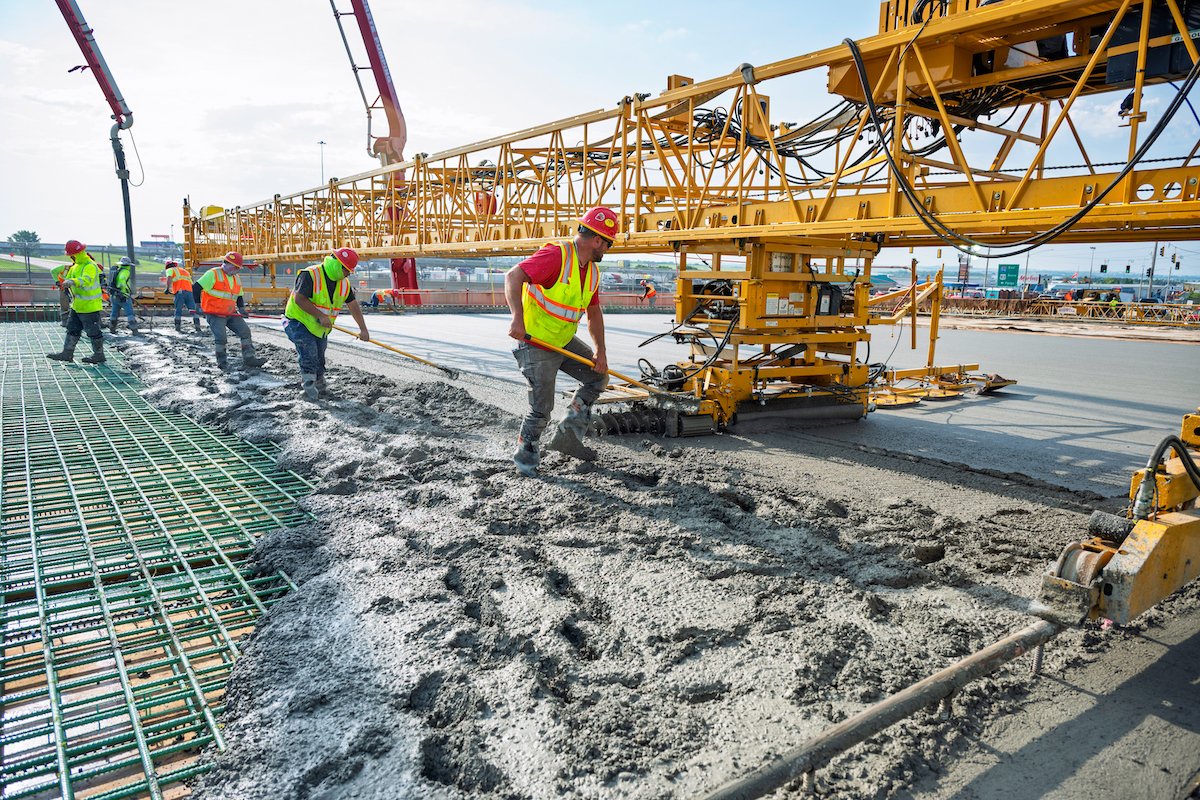Kokosing Construction is leading the work on an I-81 project in Augusta County, just east of Staunton, Virginia. The $101 million project will add a 3-mile northbound lane from Route 250 (Jefferson Highway) to the off-ramp to Route 262 (Woodrow Wilson Parkway) at exit 225.
A new southbound lane will run from Route 262, then past Route 250, continuing farther south, past the I-81 bridge over the I-81 southbound/I-64 eastbound ramp.
When complete, the project will provide a big capacity increase — expanding from two lanes to three in each direction.
Construction started in winter 2023. Kokosing, working as design-builder, is on schedule to be finished in May 2027. The Virginia Department of Transportation (VDOT) Staunton District serves Frederick, Shenandoah, Clarke, Warren, Page, Rockingham, Augusta, Highland, Rockbridge, Alleghany, and Bath counties.
Joe Duquette is VDOT’s Staunton District Construction Manager. He said that a total of five bridges are being widened to accommodate the additional lane and shoulder. One bridge is on I-81 northbound and four are on I-81 southbound. Portions of the existing structures are being repaired and retrofitted to extend bridge lifespans. More specifically, Duquette explained that the existing girders, foundation, and piers will remain, but with some retrofits. As this is a widening to newer design standards, the backwall, wingwalls, and approach slabs are being reconstructed to comply with those newer standards.

| Your local Wirtgen America dealer |
|---|
| Dobbs Equipment (SC) |
For VDOT, the I-81 Staunton-Area Widening is just one of 65 construction projects along I-81. The projects are grouped together within a larger VDOT effort called the I-81 Corridor Improvement Program (CIP). I-81 is a key north-south backbone of the East Coast’s freight network and has the highest per-capita truck volume in Virginia. More than one-third of all trucks and nearly half of the state’s value of goods are transported along the 325-mile corridor, according to VDOT.
Worker safety is top priority for VDOT. Because of the proximity of the projects within the overall corridor, VDOT approved a speed reduction from 70 mph to 60 mph. Similar work zone speed limits have been implemented for other I-81 projects. The VA State Police are enforcing lane closures. Duquette said these moves have greatly benefited workplace safety.
“Proper coordination and communication with neighboring projects have alleviated most work zone issues,” he added.
According to Duquette, the project has experienced some construction challenges, particularly at the project’s southern end where I-81 links up with I-64 heading east to Norfolk, Virginia. As is standard, Duquette said work zones were set up behind barriers. To reduce the number of interstate median construction entrances, Kokosing’s team suggested using two primary routes: U.S. 250 and Virginia Route 262 to deliver supplies and materials.

| Your local Topcon Positioning Systems Inc dealer |
|---|
| Linder Industrial Machinery |
This access change was implemented, and it has helped to reduce conflicts between construction vehicles and interstate traffic. These two primary roads pass under I-81 bridges near the southern and northern ends of the project. This has allowed VDOT to create construction-access points between the I-81 bridges and directly into the median.
The most congested project area is the stretch between the I-81 and I-64 merge and then three-quarters of a mile north to the I-81 and U.S. 250 interconnection. Three bridges need to be widened just within this short section. Close communication and teamwork among corridor project managers have prevented missteps with maintenance of traffic (MOT) issues. Also, Duquette pointed out that VDOT has kept the same team in place to manage MOT issues. That consistency, he noted, has proved valuable.
Also helpful was that Kokosing was able to secure an adjacent property for staging and project offices. The temporary site is along a secondary road that runs generally parallel to the interstate, about a two-minute drive from the offices to the I-81/Route 250 interchange.
Bridge widening has proceeded on course. Duquette said that initially, Kokosing planned to perform the bridge work consecutively but then decided to work all bridges concurrently, a change that put the overall project ahead of schedule. The bridge work is phased construction with closure pours. Lane/roadway widening is toward the median.

| Your local Trimble Construction Division dealer |
|---|
| SITECH Mid-South |
All the bridges are simple span, and the final widening deck slab will be jointless. The bridges over Lewis Creek, Duquette explained, have prestressed concrete beams while the others have steel beams. All new beams will be of similar materials. To achieve the best results from the closure pours, traffic will be detoured. U.S. 250 and Virginia Route 262 are not included in the overall project, and the project does not include any pedestrian or multi-modal infrastructure.
All bridge girder deliveries are coordinated with the department for staging on nearby ramps. Day-to-day deliveries such as concrete, stone, asphalt, etc., are escorted to the site. Duquette said these practices enhance site access safety and reduce onsite conflicts.
For VDOT, this is a familiar stretch of roadway. Topography and soils presented few problems. However, one material in short supply was topsoil. All VDOT projects, Duquette explained, require 3 inches of approved topsoil.
“Unfortunately,” he said, “this requirement has taken its toll on the ecosystem over the past several years. Now, contractors find it difficult to source enough quantities for projects.”

| Your local Komatsu America Corp dealer |
|---|
| Linder Industrial Machinery |
Consequently, VDOT is evaluating topsoil alternatives, and for this project is using Profile ProGanics DUAL, an engineered soil media product with organic matter and other soil building properties. It also acts as an erosion control product to hold seed and soil in place until germination. Duquette said that ProGanics has proven effective in similar private sector applications. He added that ProGanics is already on VDOT’s approved list. Other competitors are working their way through the process.
“The decision to use a topsoil alternative is based on a variety of factors such as topography, climate, VDOT District preference, and project duration and size,” Duquette said. “Currently, our main issue is perception with designers and contractors, as it’s a new product. So far, we are pleased with the results in Staunton District.”
John Martin is Director of Engineered Soil Media at Profile Products. He said that with topsoil, there are issues beyond availability. Topsoil may be present, he explained, but it may not be agronomically viable, lacking the nutrients and microbes necessary to foster and sustain growth. He said contractors are finding that an engineered solution, like ProGanics, is more cost-effective because it can be one-third as expensive as purchasing and hauling-in distant topsoil.
Martin highlighted some of the differences between natural and alternative topsoil. An alternative is not a one-to-one replacement. He explained, for example, “that if a project calls for 4 inches of topsoil across a site, you wouldn’t apply 4 inches of ProGanics. Instead, it is applied by pounds per acre, with the rate determined by the organic matter percentage in the soil.”

| Your local Bomag Americas dealer |
|---|
| Linder Industrial Machinery |
Topsoil shortages, Martin said, are becoming an increasing problem and are a challenge across many industries. DOT and highway jobs, though, are unique because the soils are often heavily disturbed, compacted, and left bare for extended periods.
“Our team has seen projects that have sat barren for months or even years,” Martin said. “In some cases, conditions are so denuded the soils can’t even support weed growth. Engineered soil amendments are catalysts for the nutrient cycling needed to regenerate soil function and establish sustainable vegetation even in severely depleted conditions.”
Alternative soils are durable, Martin said. New turf and grass stands up to commercial scale mowing equipment. Over time, the engineered soil media mimics and enhances natural processes, and soil conditions continue to improve, resulting in a sustainable landscape.
ProGanics is shipped in bales. These are added to a hydroseeder. The bales are mixed with water, seeds, and additional components necessary or desired at a particular site. This forms a slurry that is hydraulically applied to the soil.

| Your local Volvo Construction Equipment dealer |
|---|
| Richmond Machinery & Equipment |
For example, Martin said that to cover 1 acre with 4 inches of topsoil, contractors need to bring in about 36 dump trucks of topsoil (based on a 15-cubic-yard capacity dump truck). By comparison, a contractor would only need two tank loads of ProGanics for that same area, assuming a 3,000-gallon capacity hydroseeder and applied at recommended rates (3,500 to 5,000 pounds per acre).
In addition to topsoil challenges, VDOT crews encountered unstable soils at a few sites, but these were easily corrected. Highly plastic and excessively wet soils, for example, were addressed by undercutting the area, installing a geosynthetic fabric and open-graded base stone, then capped with 21B stone. Soils within the widened roadbeds were removed for full-depth reclamation. Water detention and sediment traps were used to mitigate environmental issues.
The project has used standard equipment for soil, paving, and bridge operations. A soil reclamation machine was used for the full-depth reclamation, which blended the quarry stone and dry cement in place.
Concrete from the bridge demolition was buried in the median. Most asphalt millings were reclaimed by the contractor for future use and incorporation into new asphalt elsewhere. However, that future use will be in different projects, not this I-81 widening. The proposed widened areas using asphalt were treated with full-depth reclamation utilizing quarry stone and dry, binding cement. For the Staunton project, all finished roadway surfaces will be asphalt. Bridge decks will be concrete with an epoxy overlay.

| Your local Wirtgen America dealer |
|---|
| Dobbs Equipment (SC) |
Regarding technology, VDOT uses AutoDesk’s PlanGrid to streamline documentation requirements and generate task reports. Kokosing uses a drone to provide aerial photography. The company also uses OxBlue cameras for CCTV and timelapse photography. (These images are available to the public on the VDOT website and Improve81.org, a dedicated website for the I-81 CIP.) On the ground, Kokosing uses conventional GPS survey equipment with GPS guided equipment for mass grading, followed by Total Station survey equipment for fine grading. Additionally, VDOT is using its Intelligent Transportation System to keep motorists informed via the system’s Dynamic Message Signs, 511 Virginia, and social media outlets.
“So far,” Duquette said, “there have not been any unexpected construction challenges.” VDOT’s team is working hard to keep it that way.
- Owner: Virginia Department of Transportation
- Owner’s Project Consultant: Reynolds, Smith & Hills (RS&H), Glen Allen, Virginia
- General Contractor: The design-build team of Kokosing Construction Company Inc., Westerville, Ohio; Rinker Design Associates LLC, Manassas, Virginia
- Other Contractors/Partners: Quinn Consulting Services Inc., Chantilly, Virginia; Haley & Alrich Inc., McLean, Virginia; Fairfield-Echols LLC, Fishersville, Virginia; B&S Contracting Inc., Staunton, Virginia Editor’s Note: Photos © Virginia Department of Transportation. The display of images and/or reference to any specific commercial product, process, or service, or the use of any trade, firm or corporation name does not constitute endorsement, recommendation, or favoring by the Virginia Department of Transportation.

